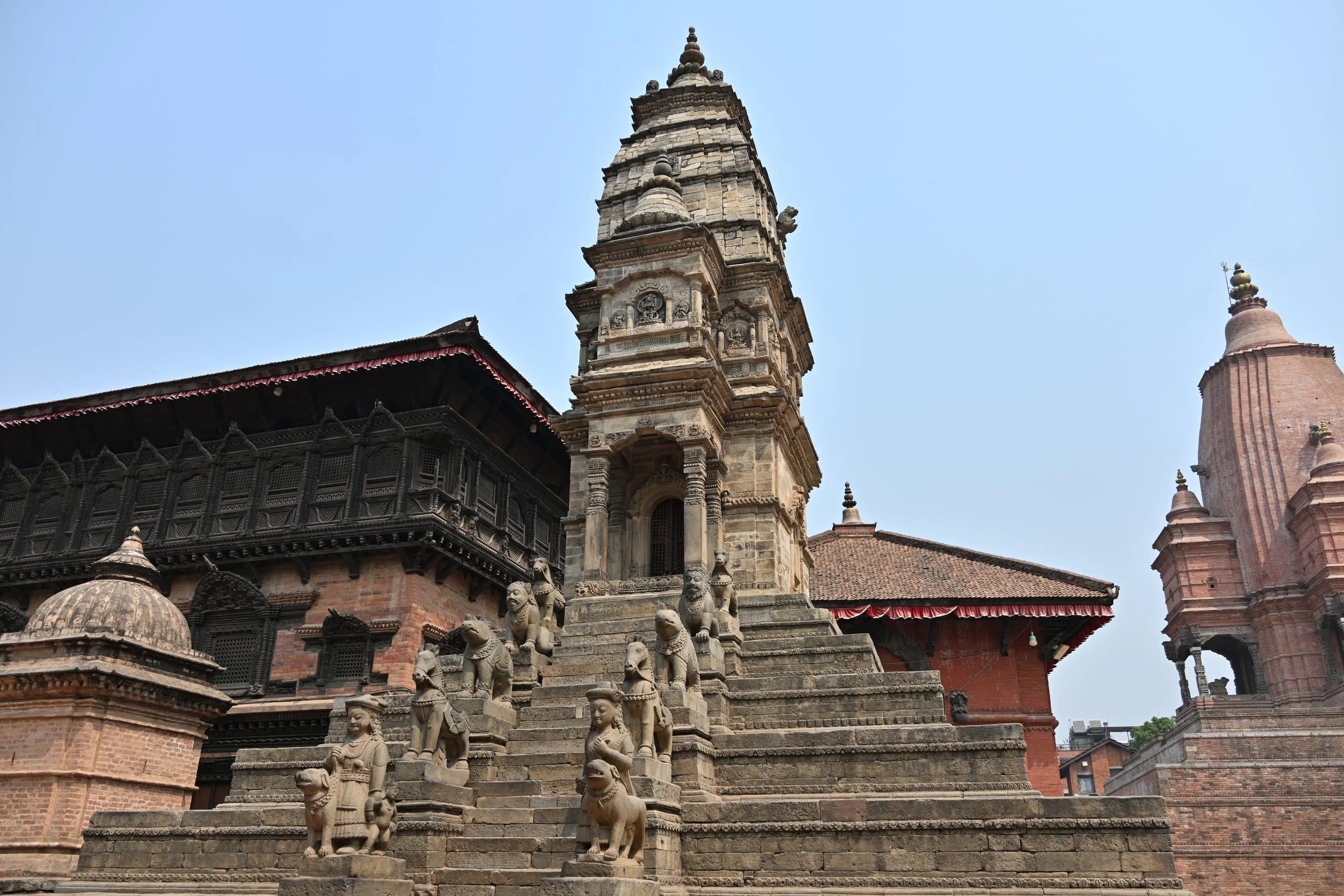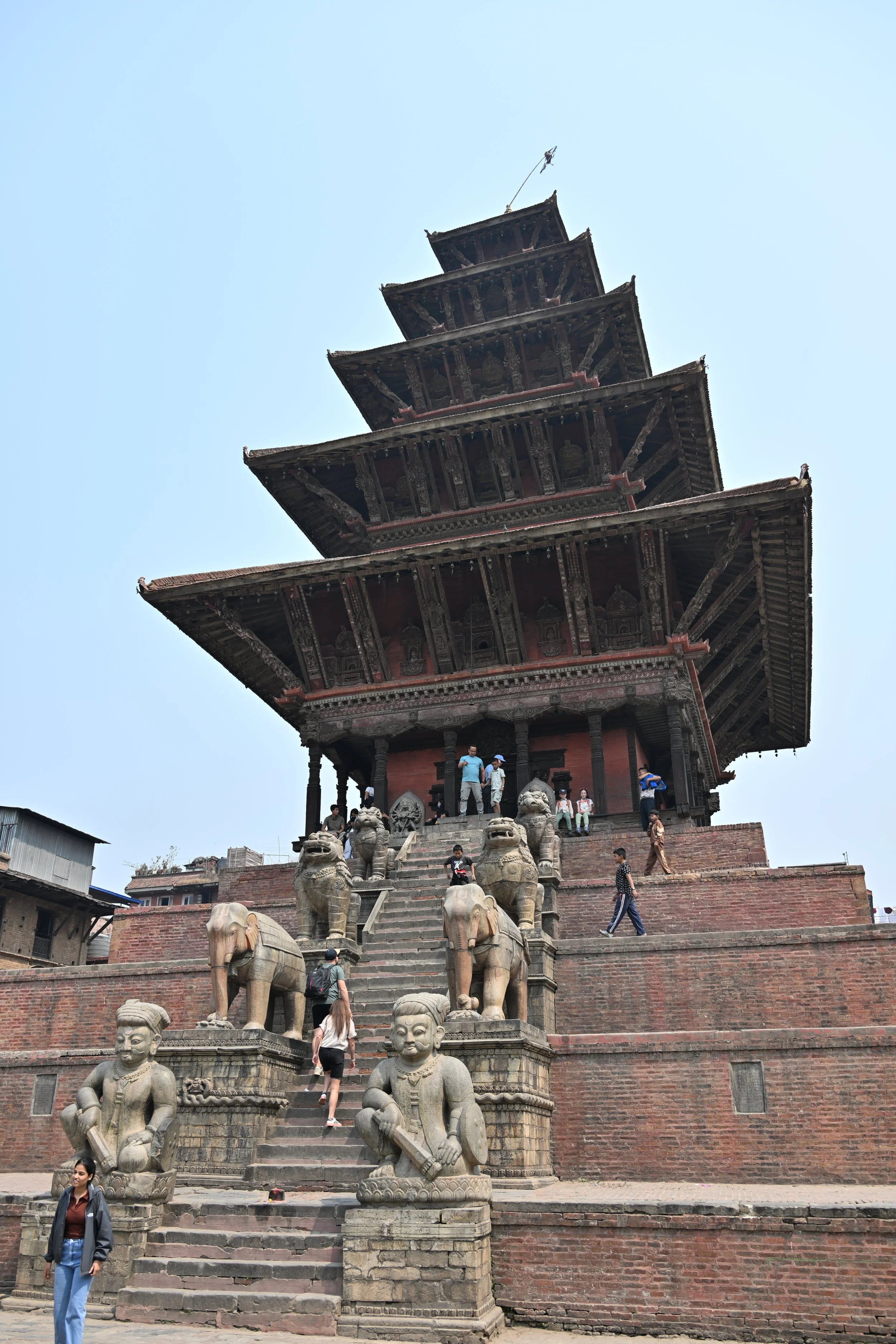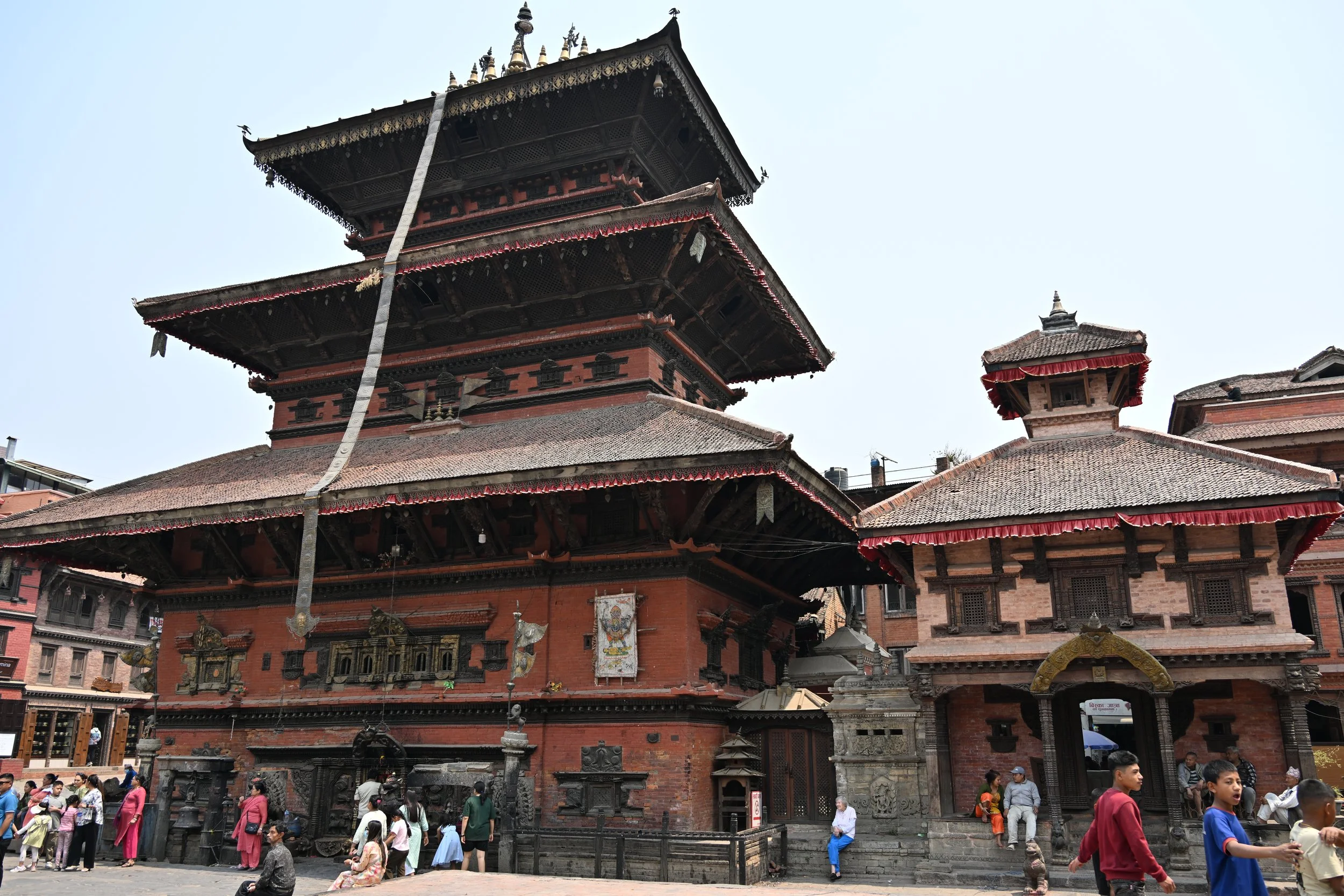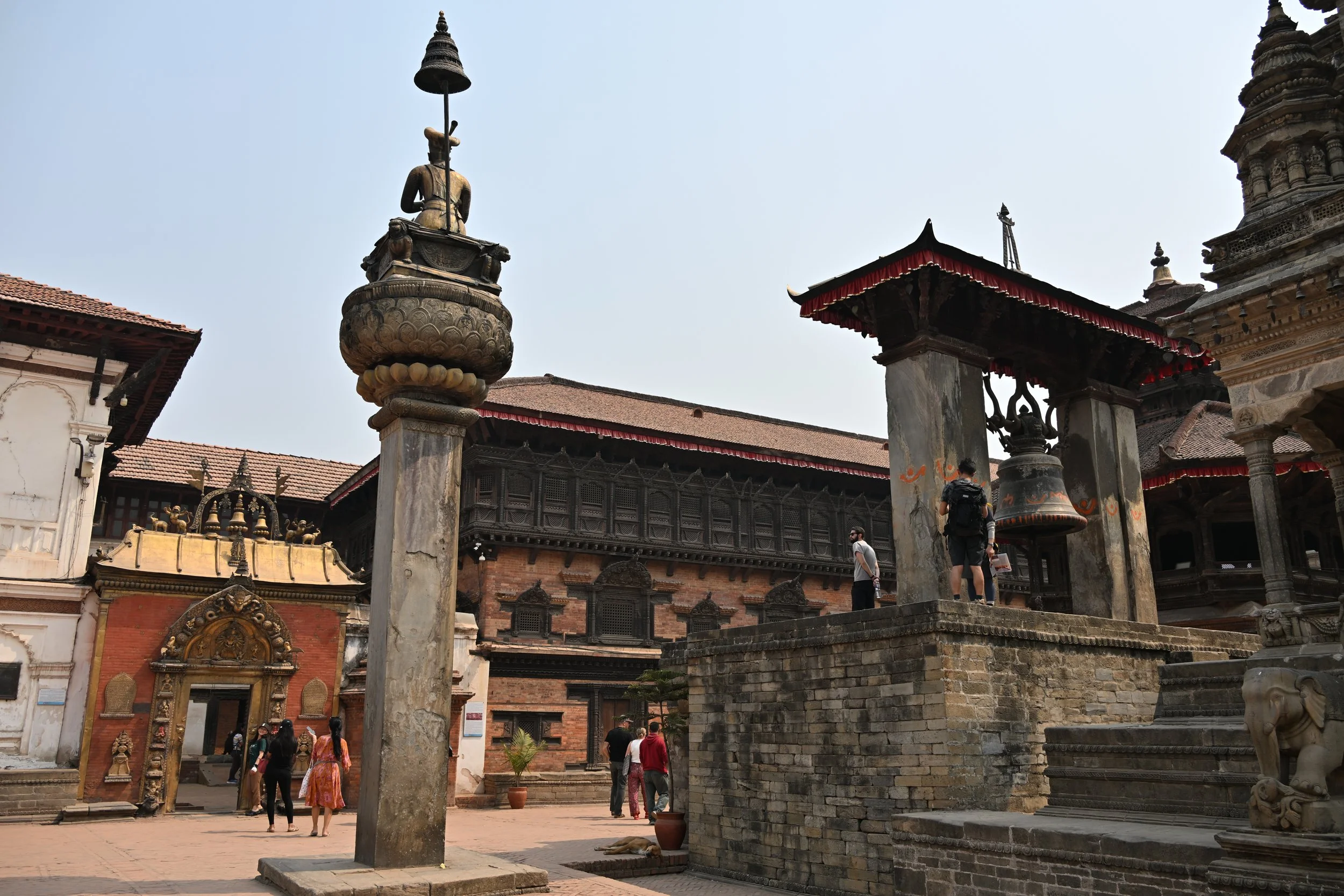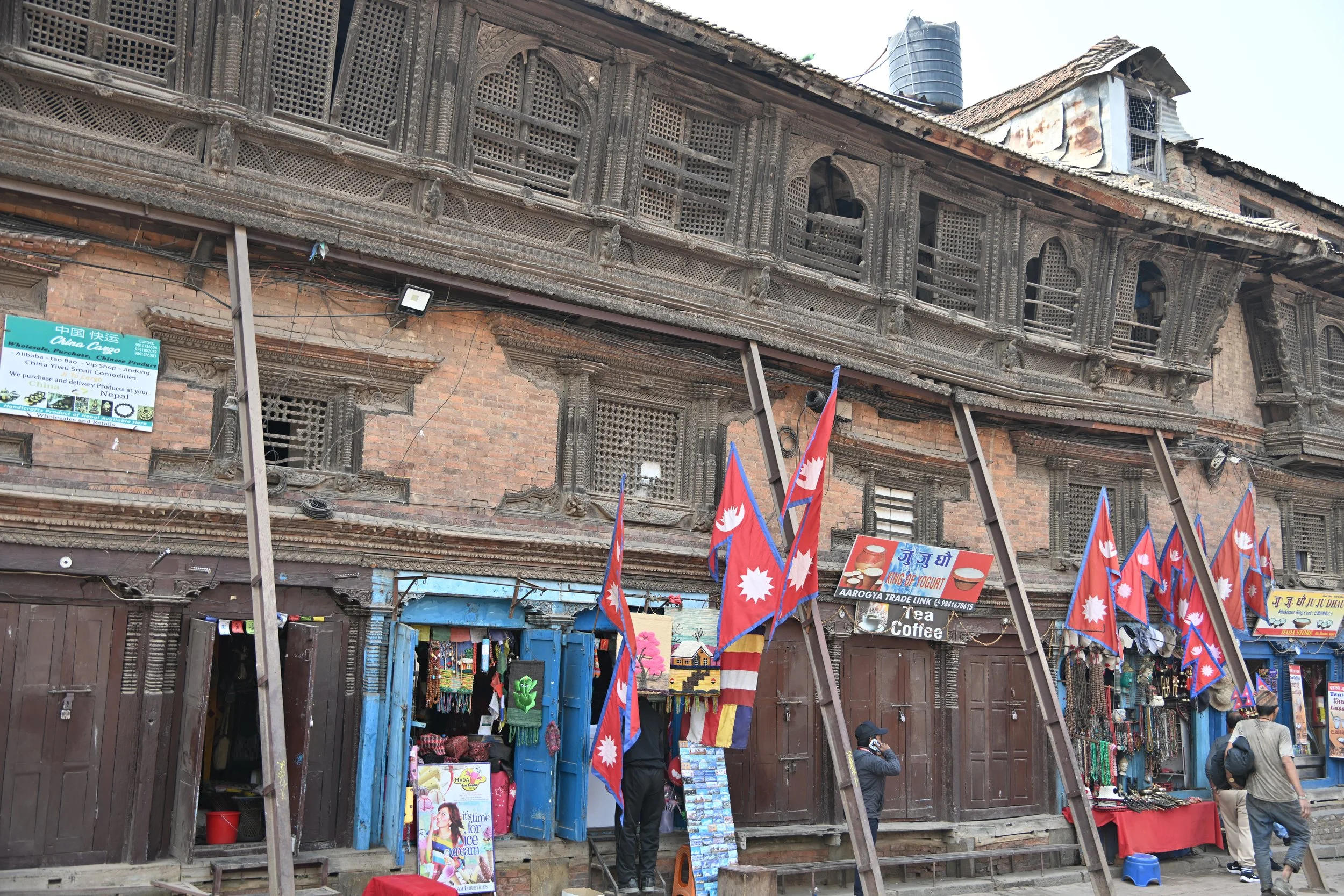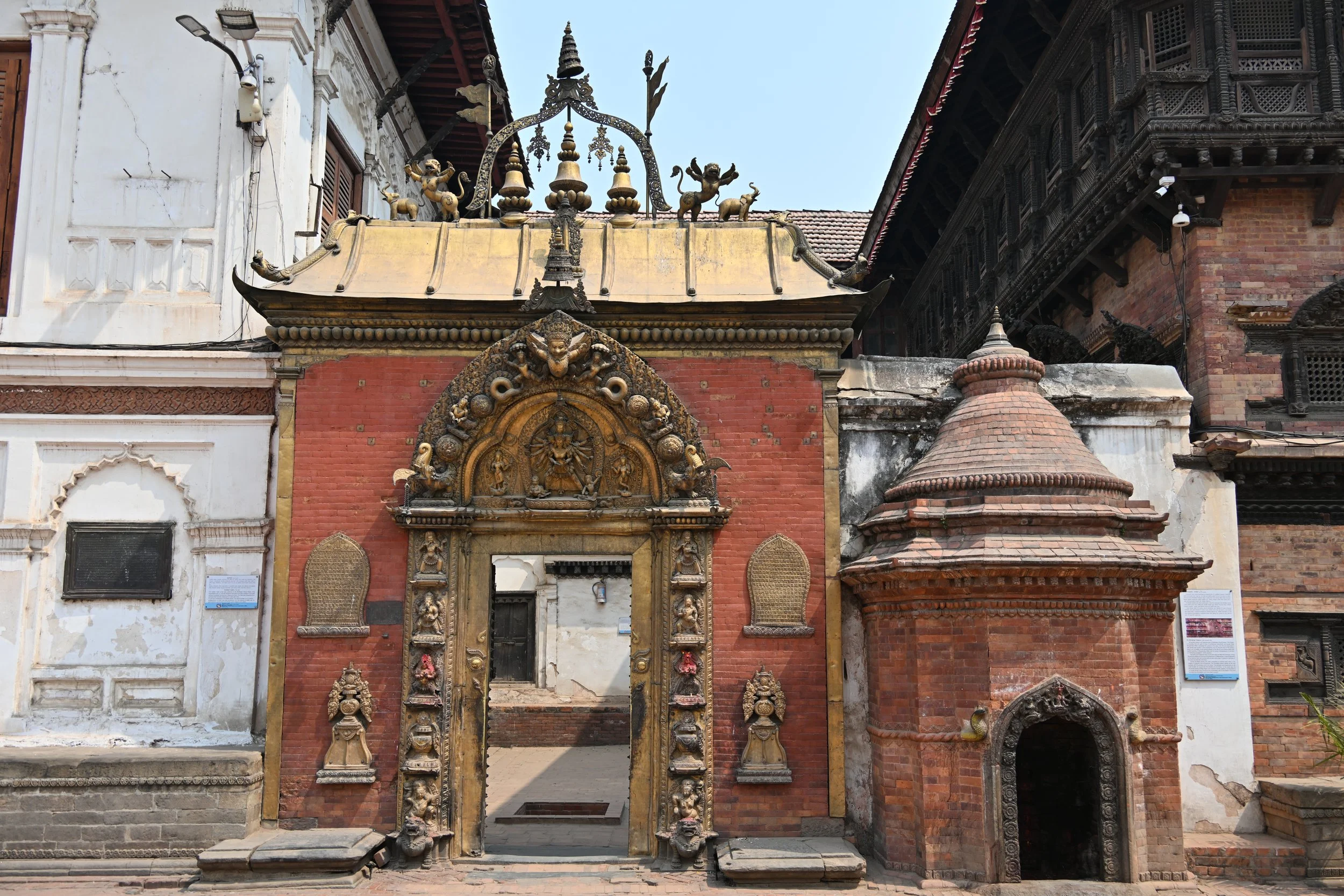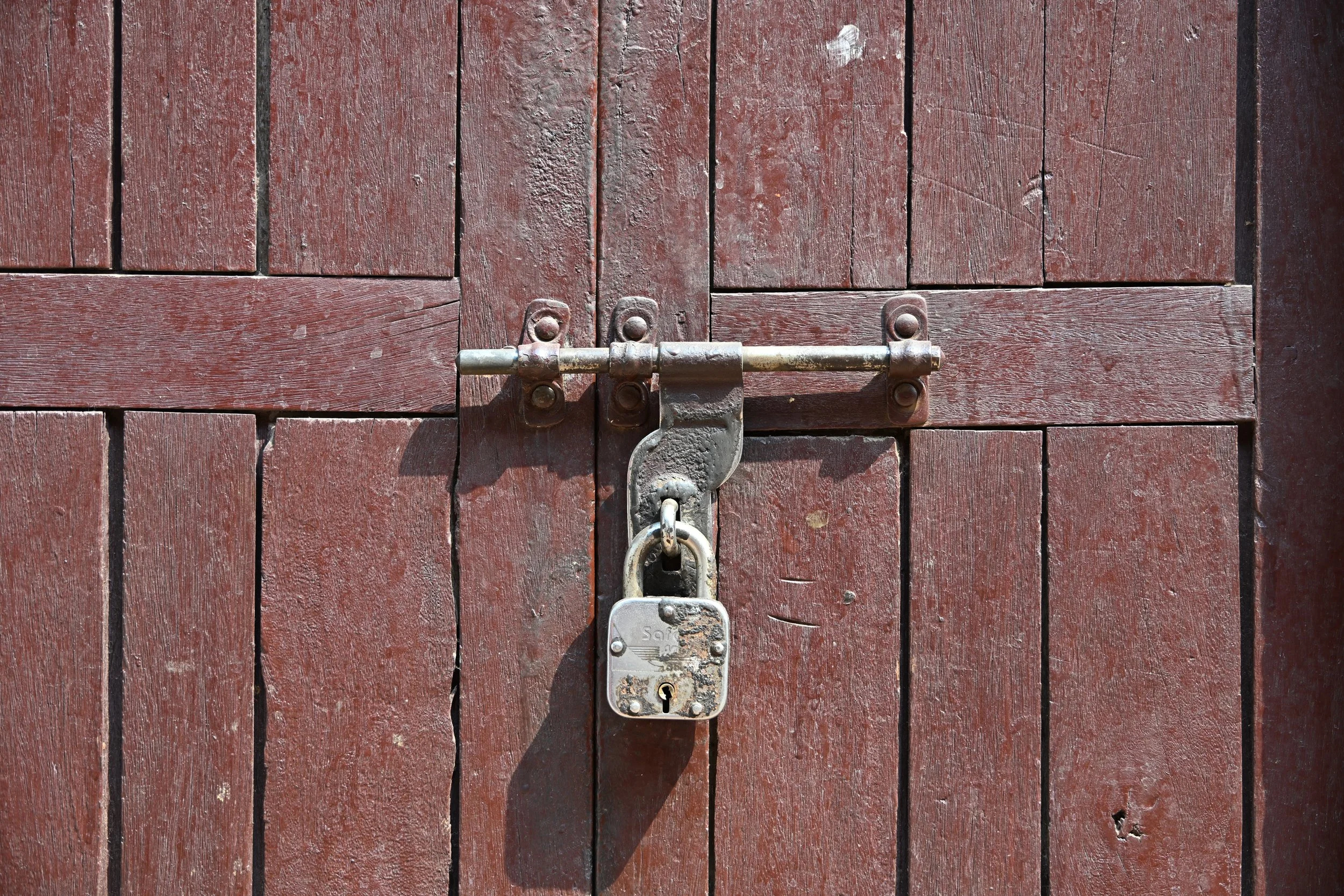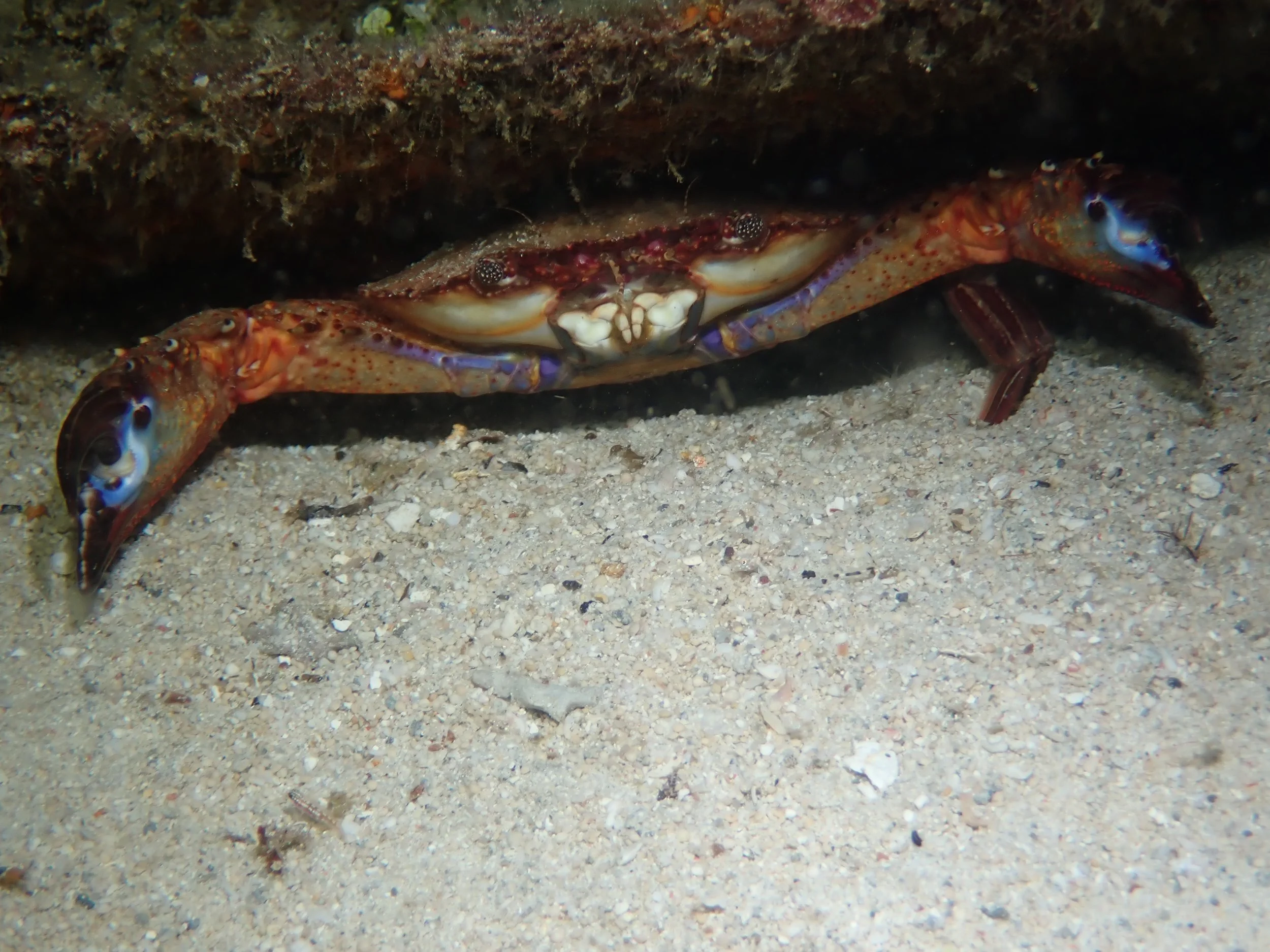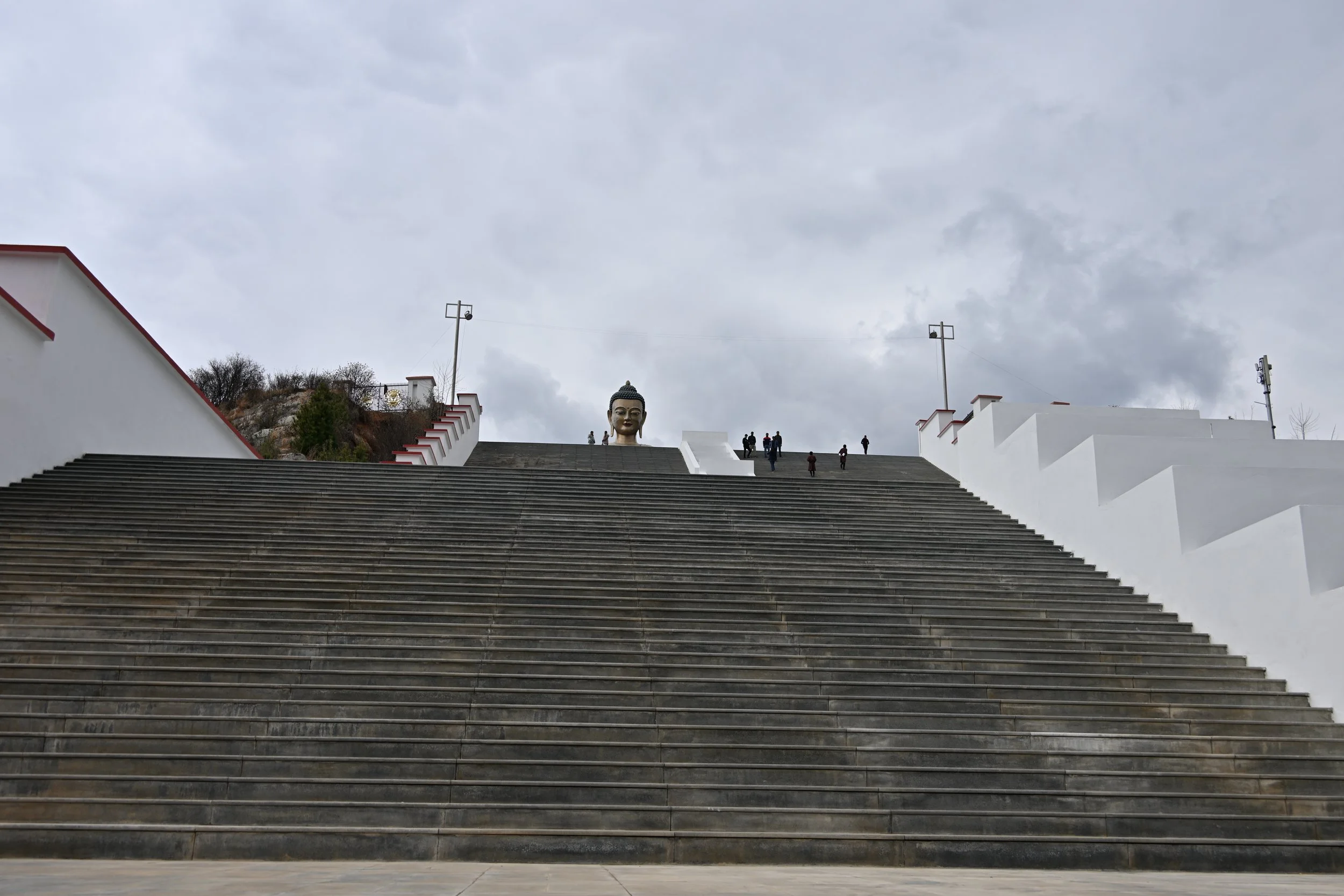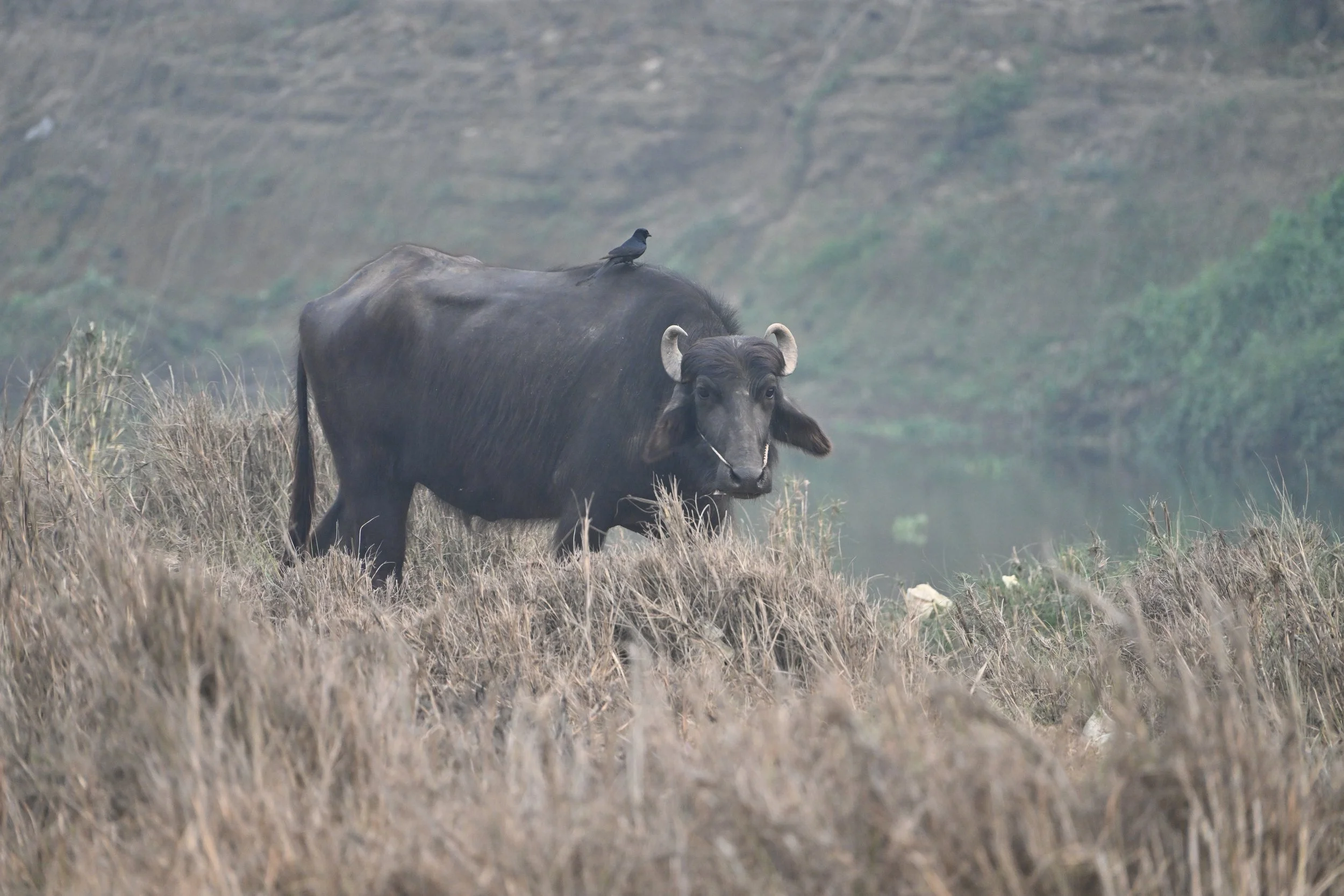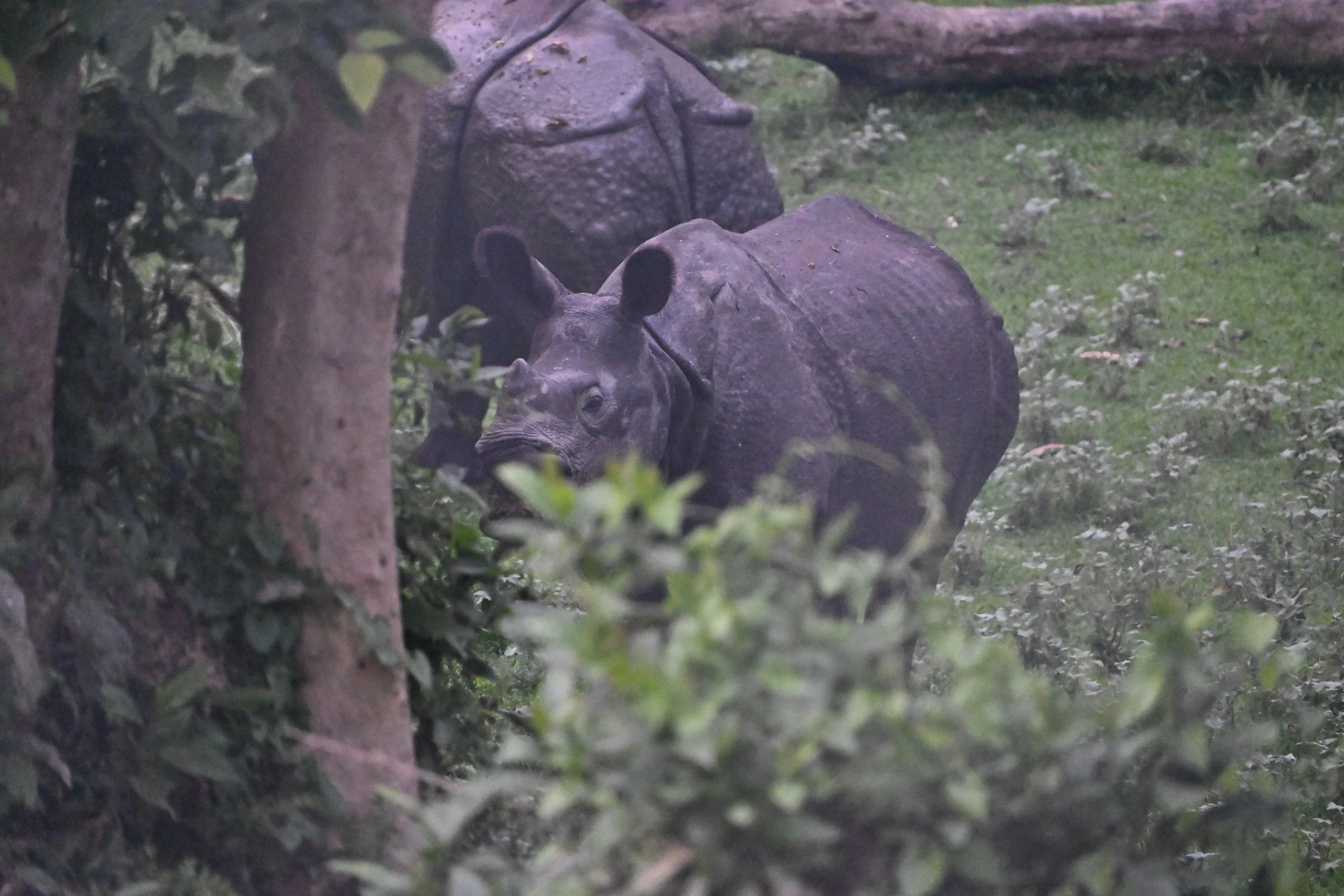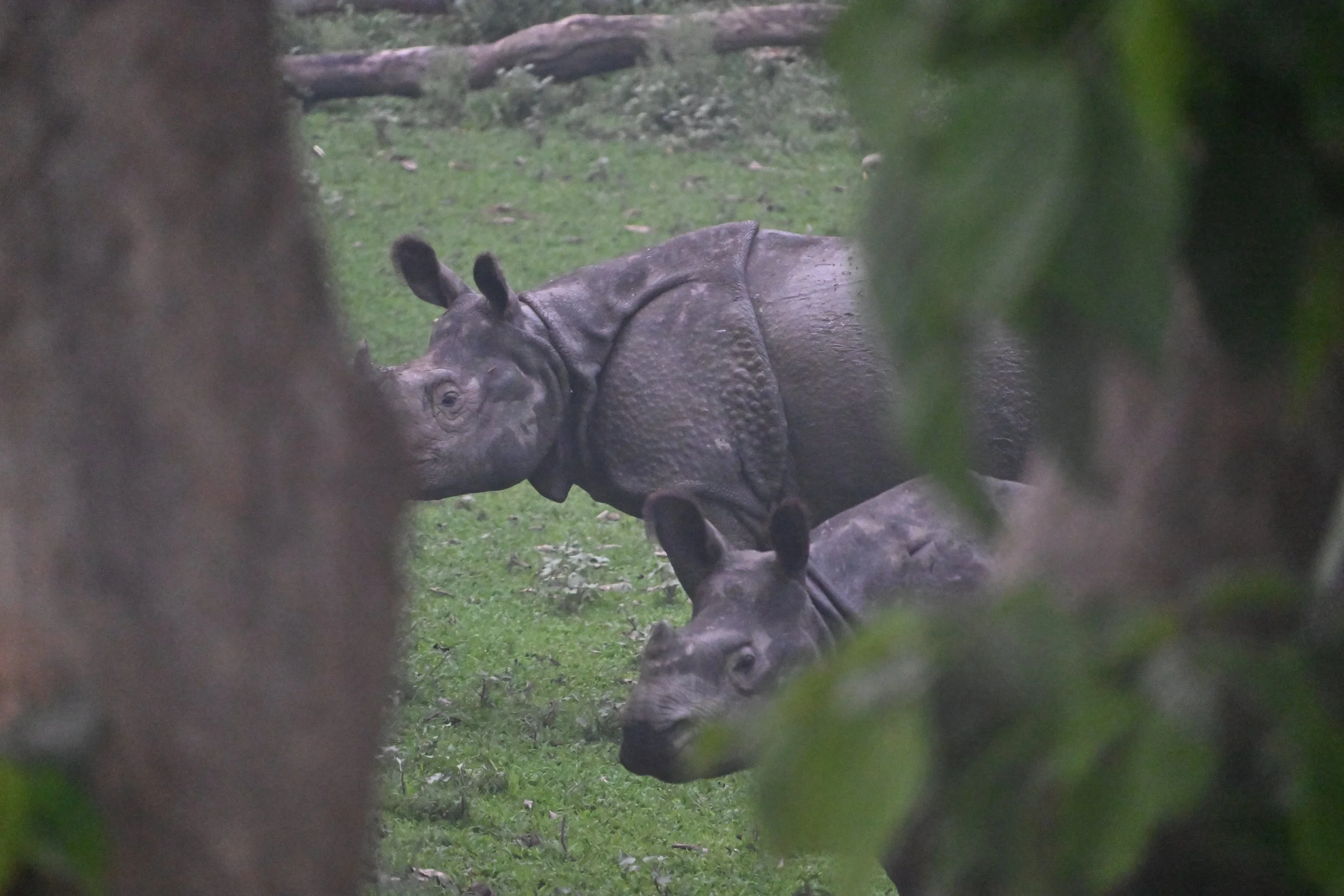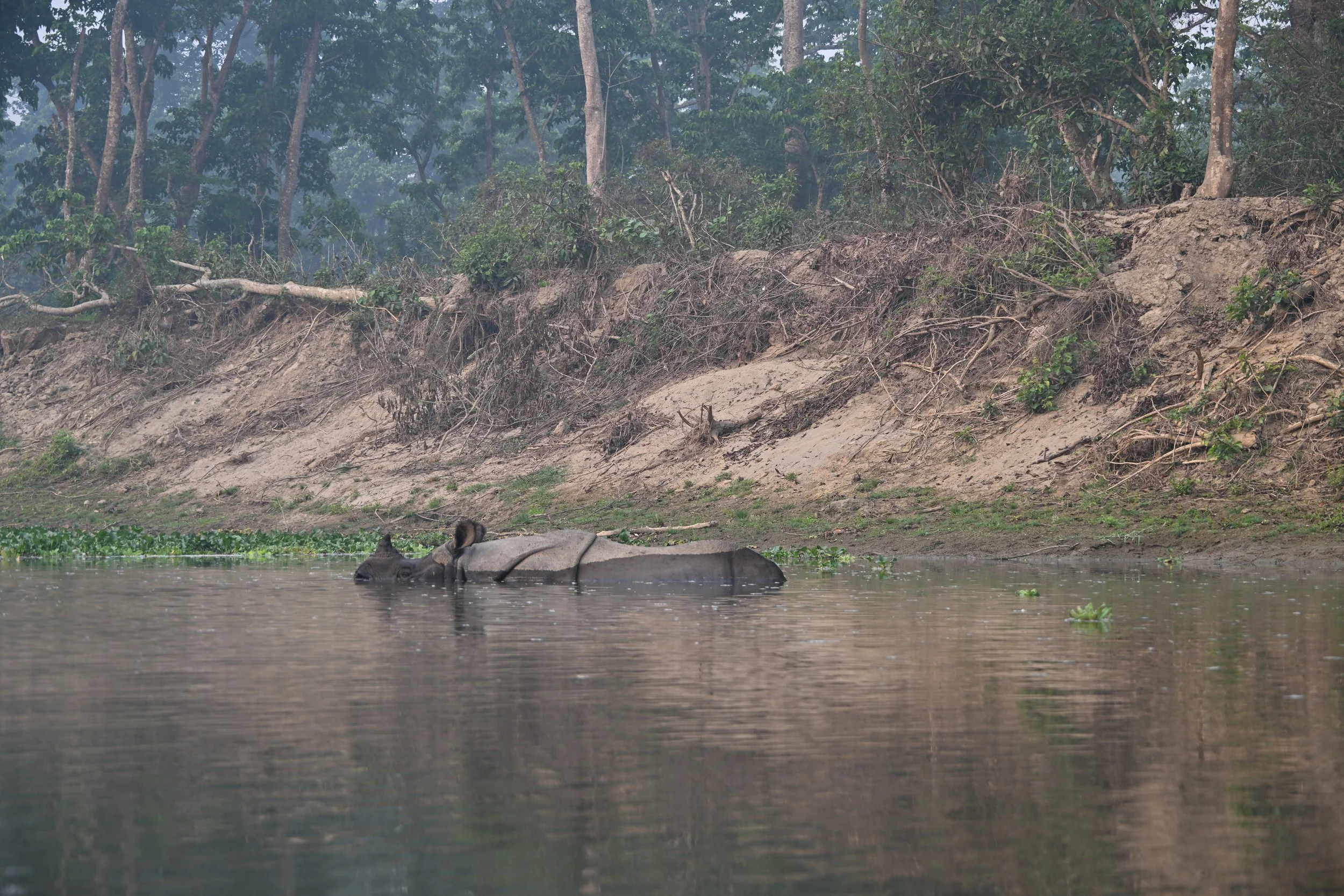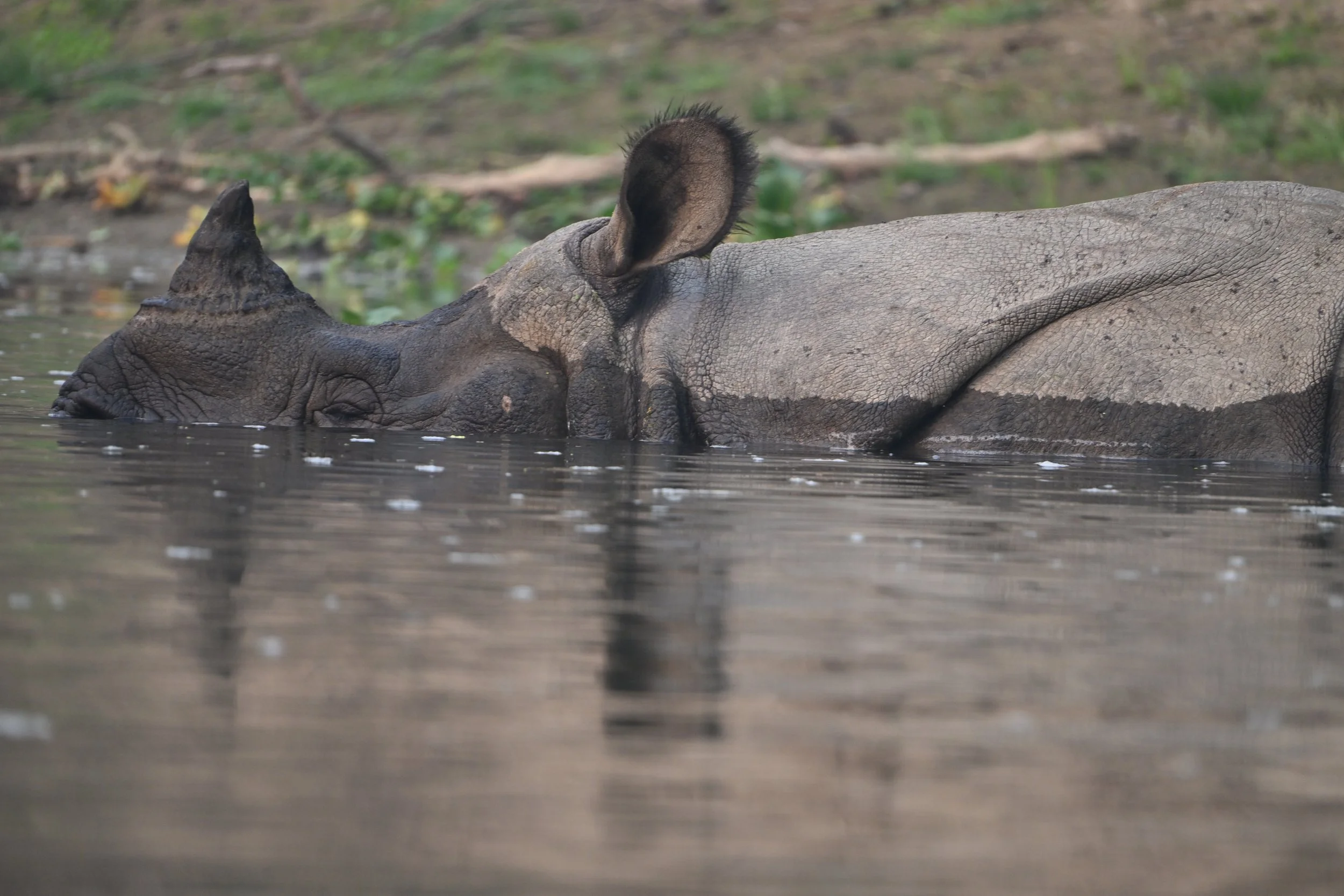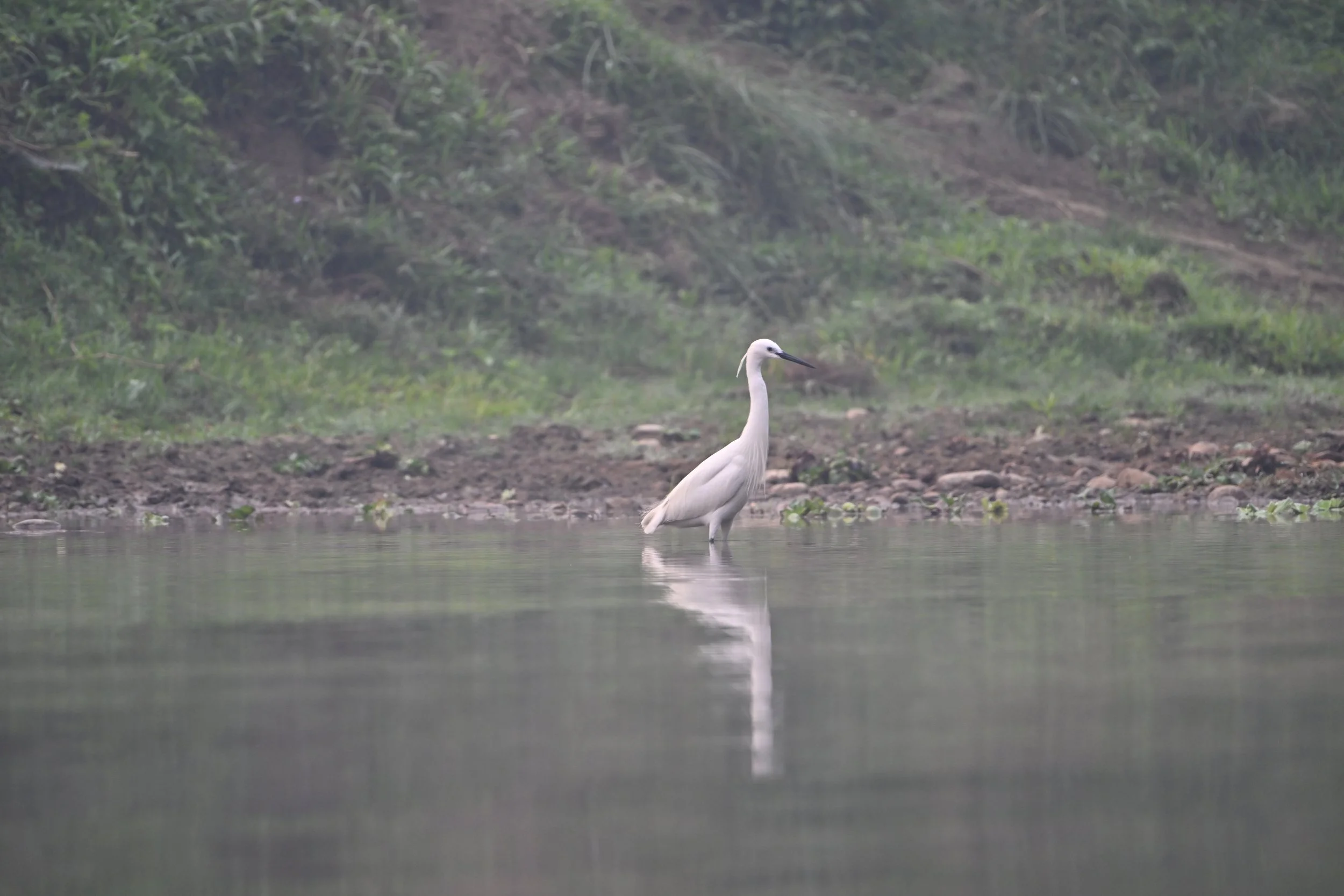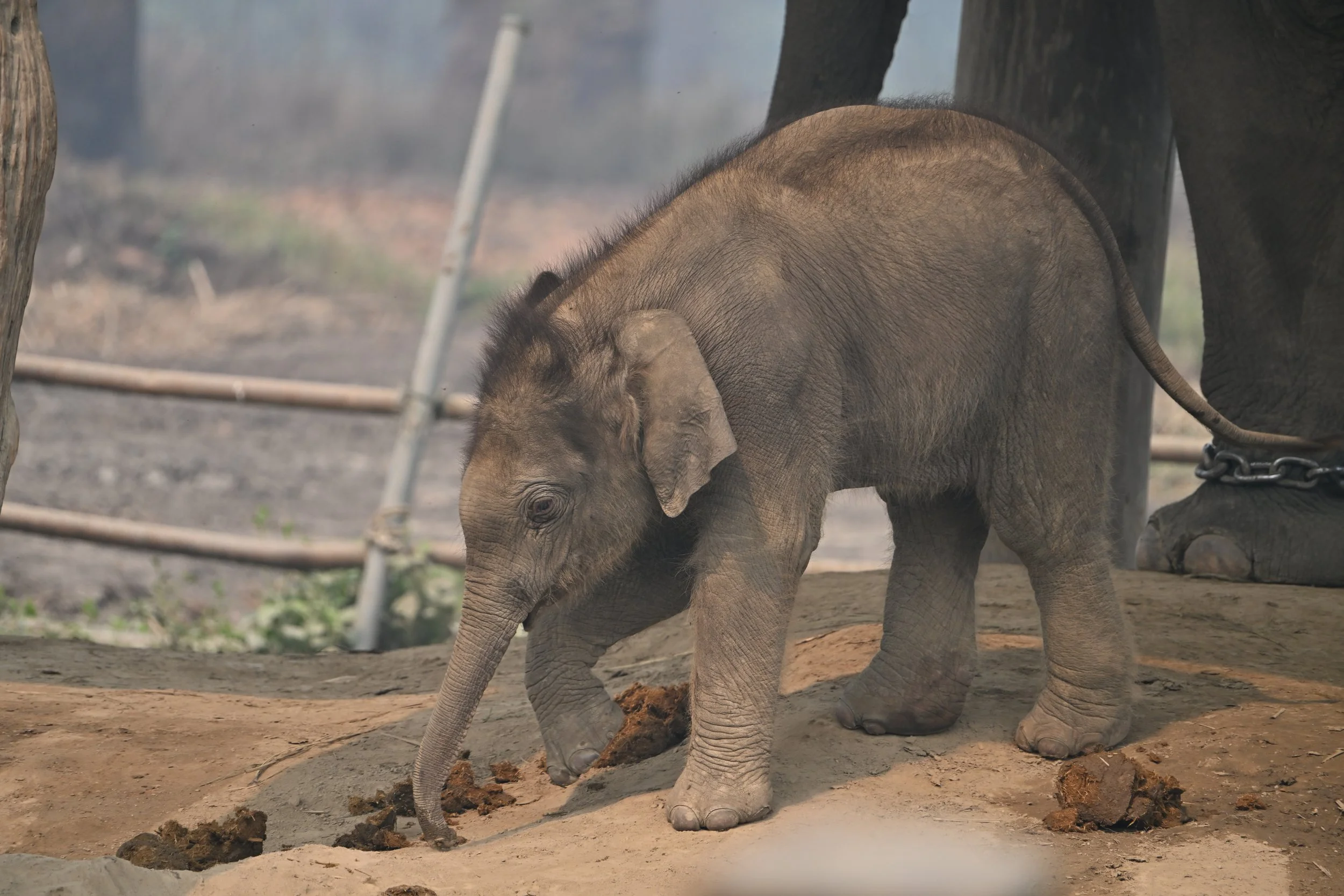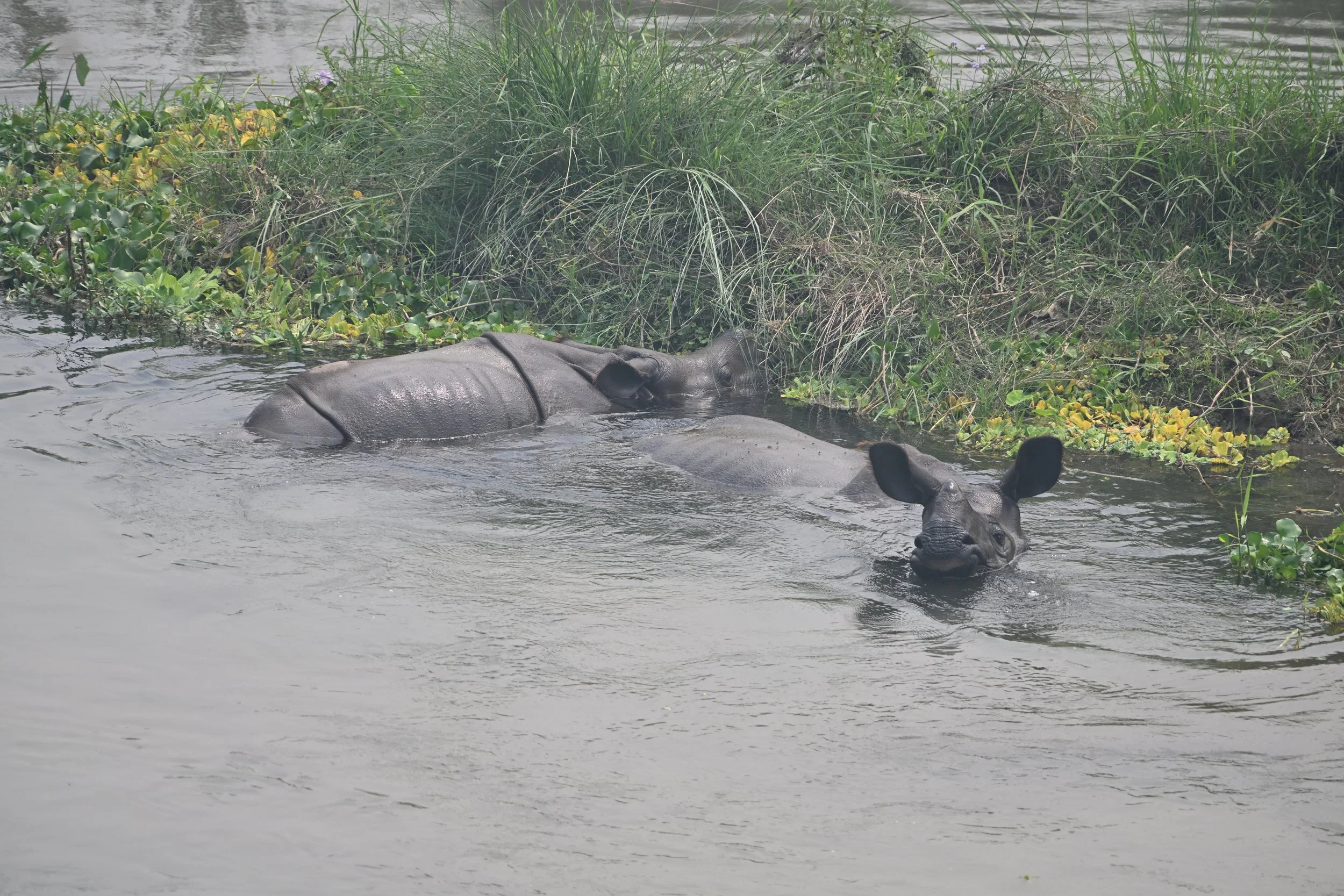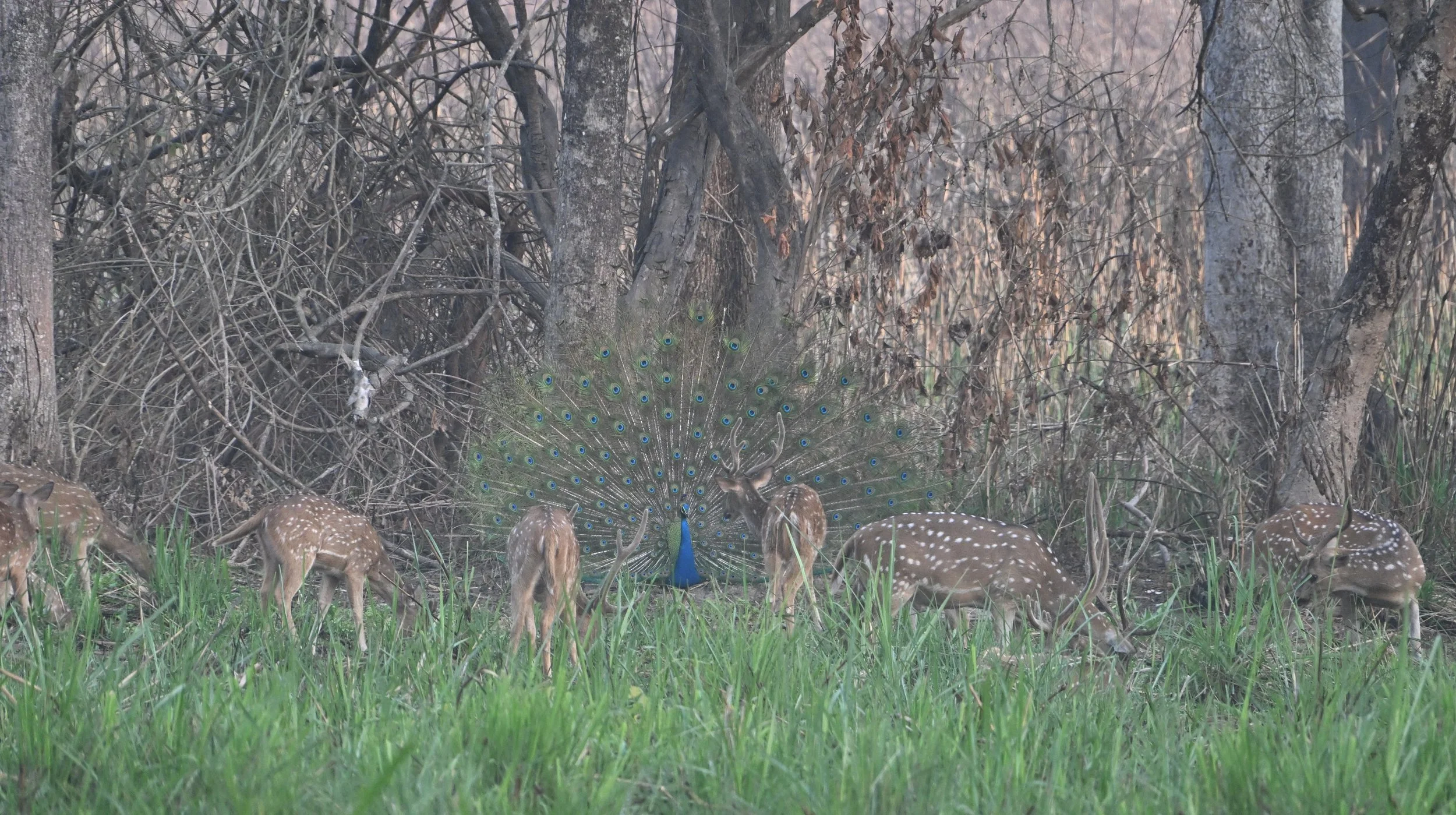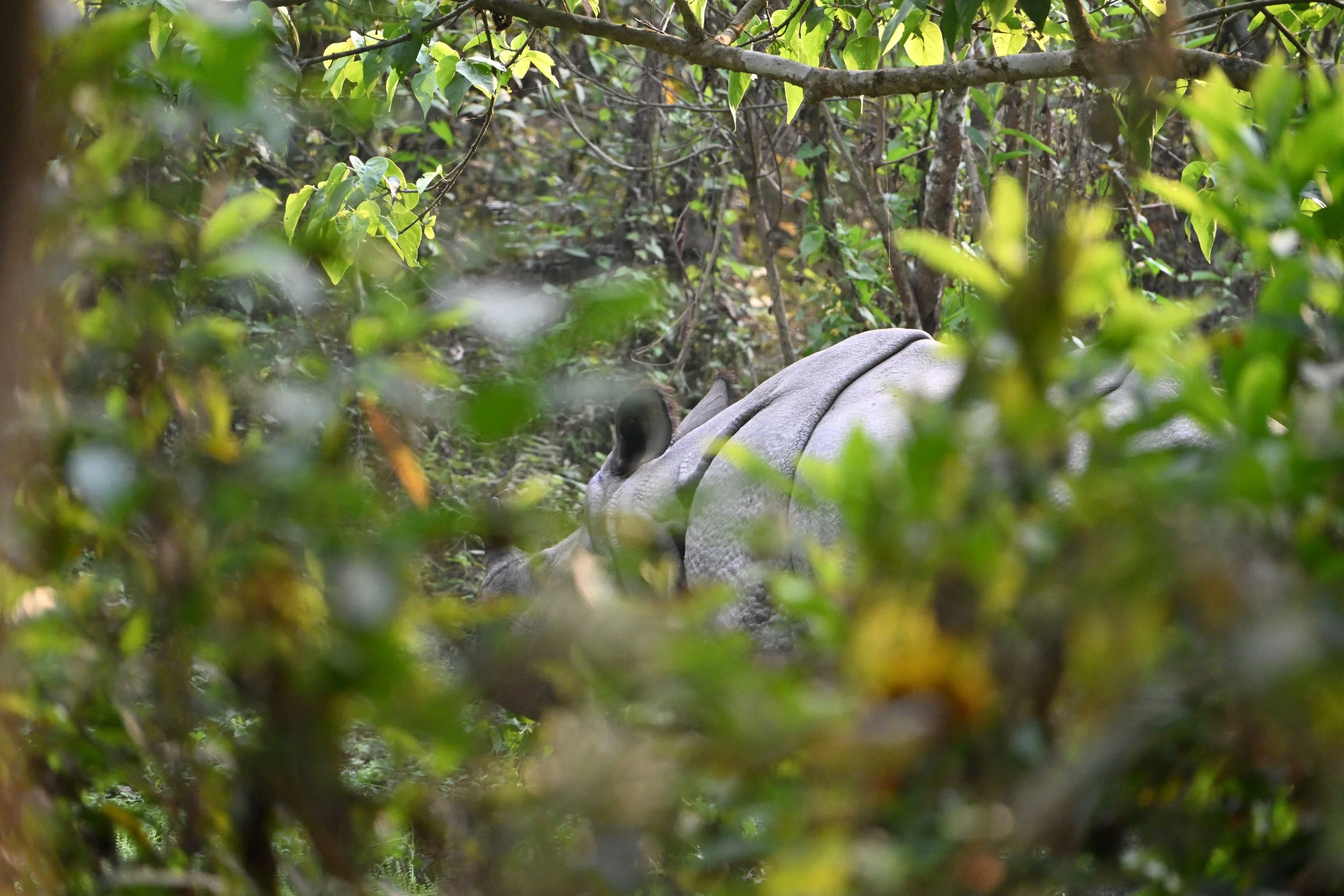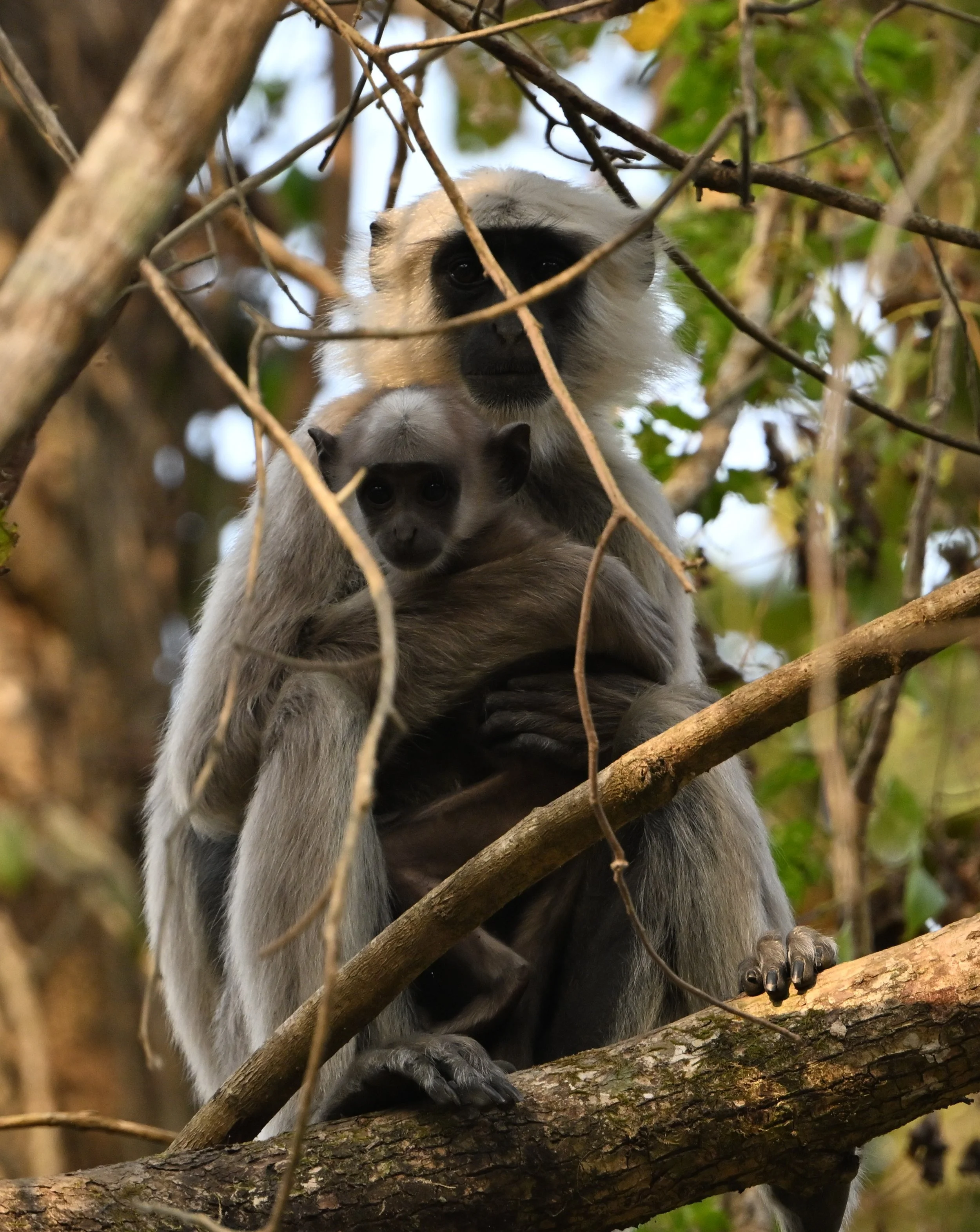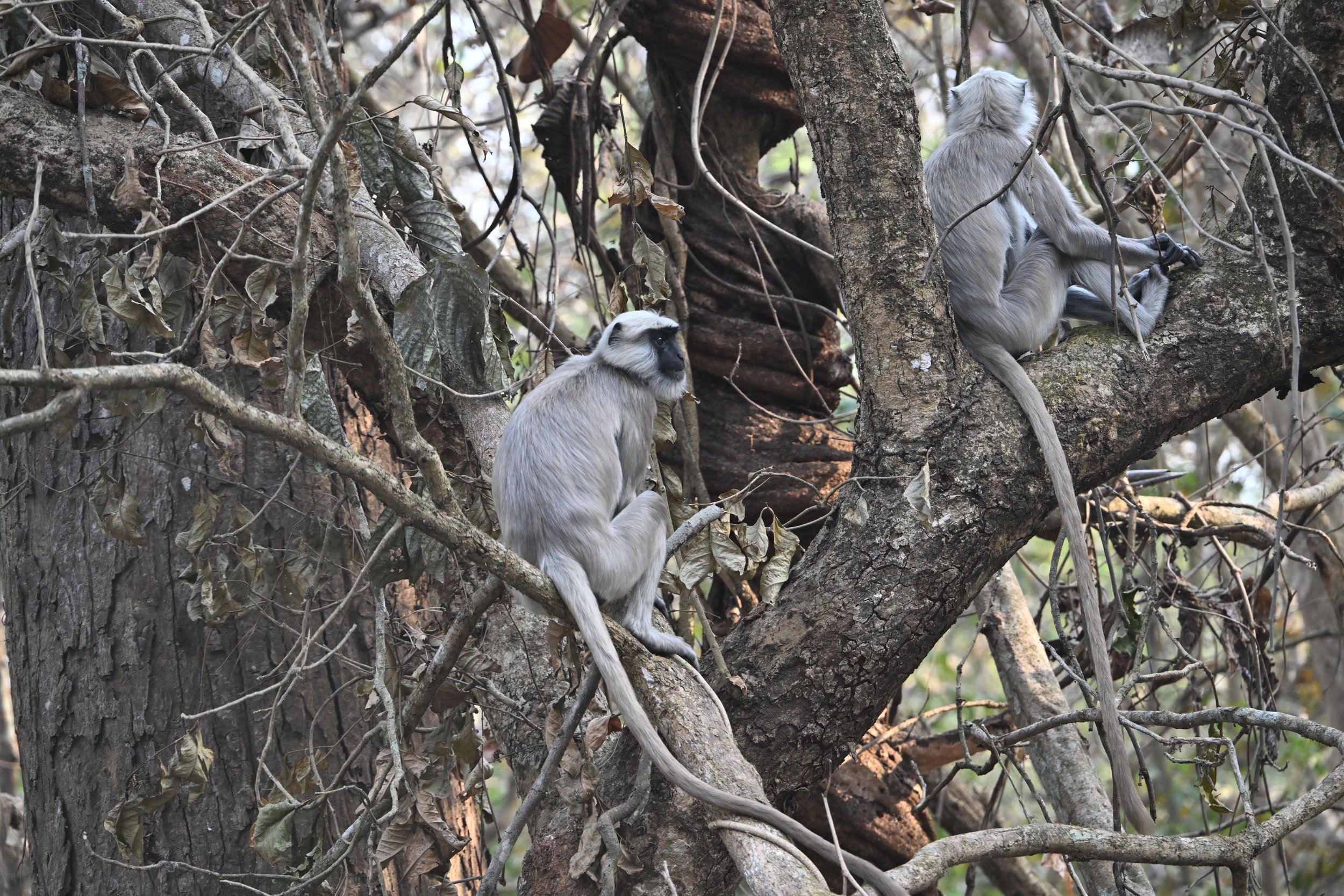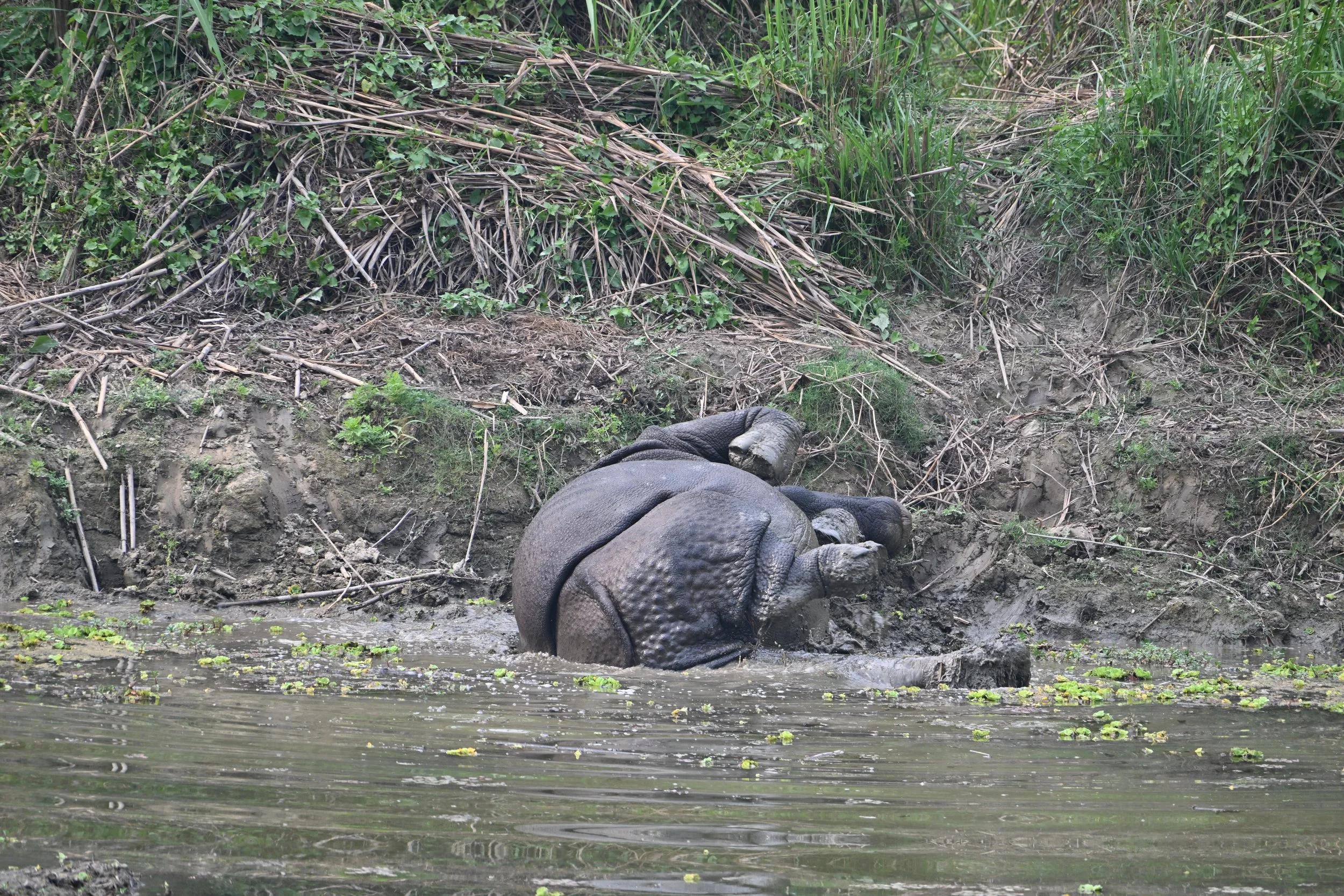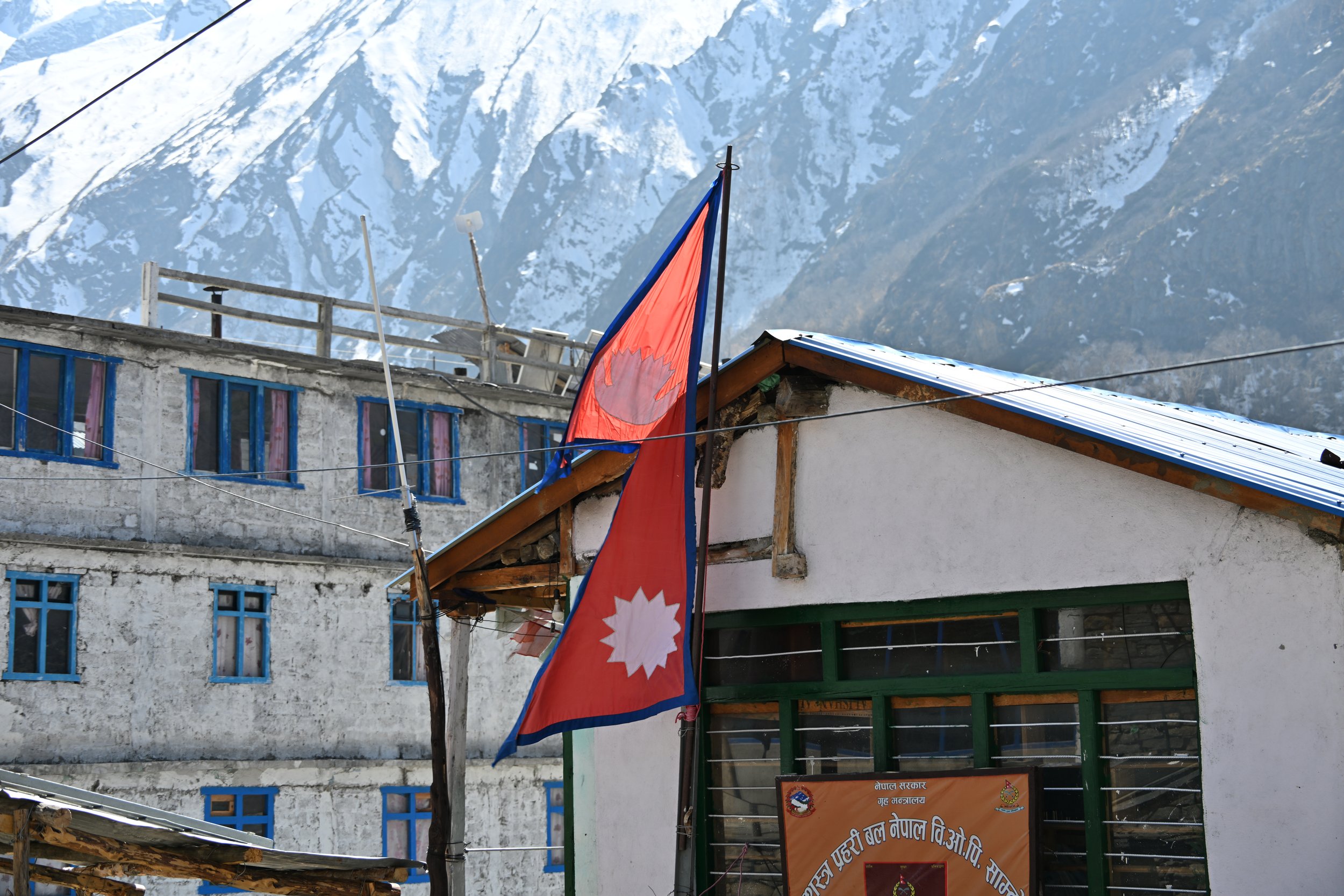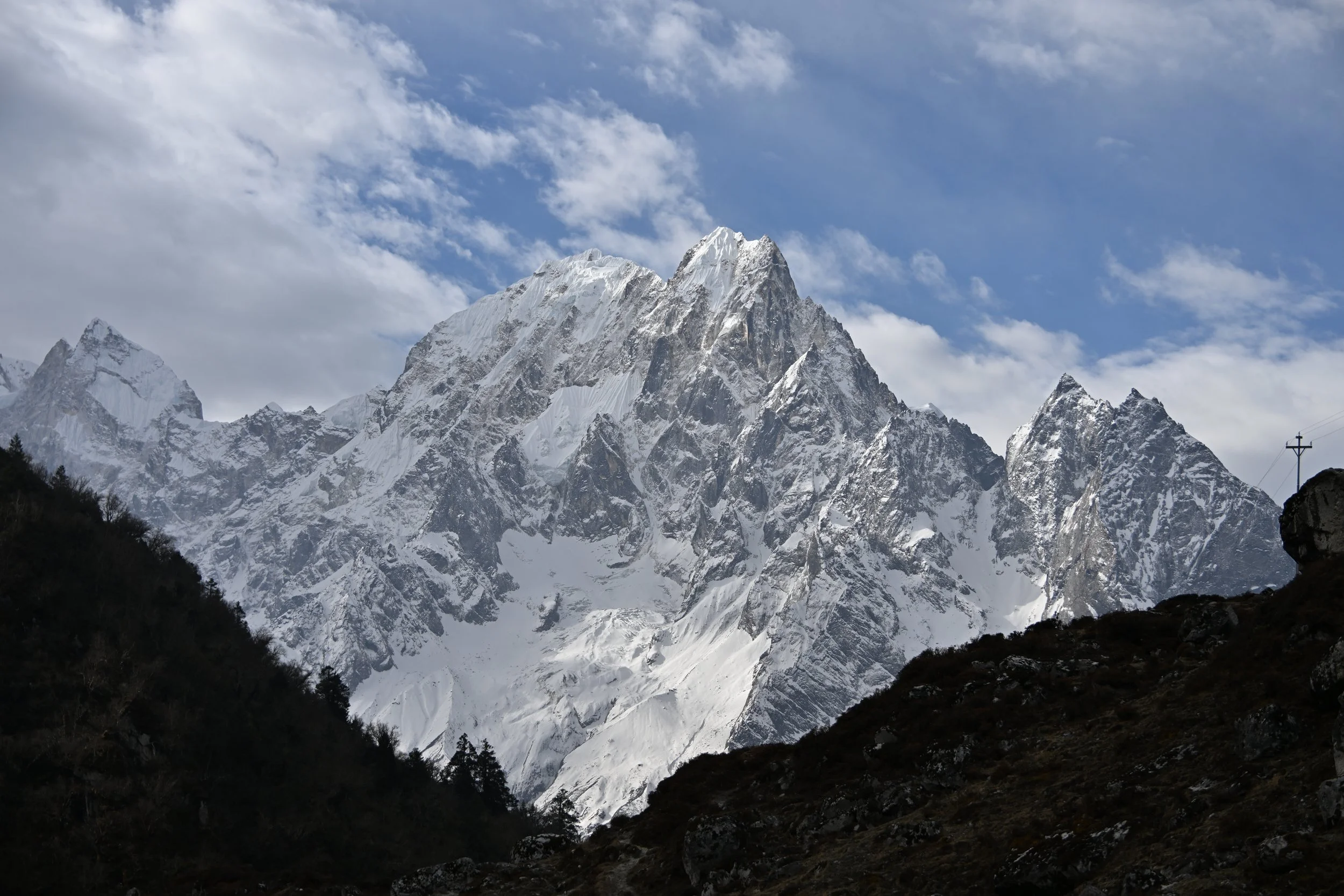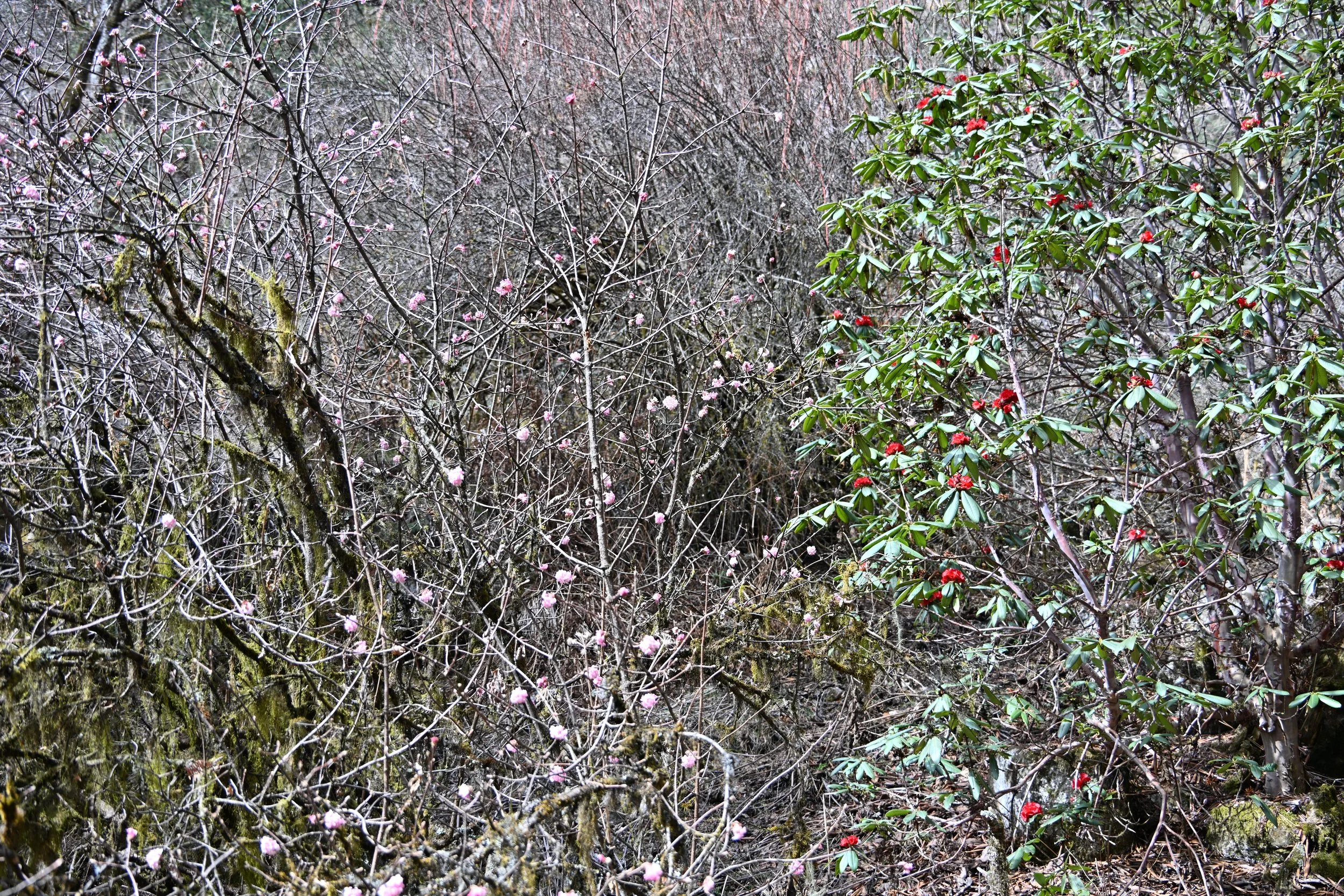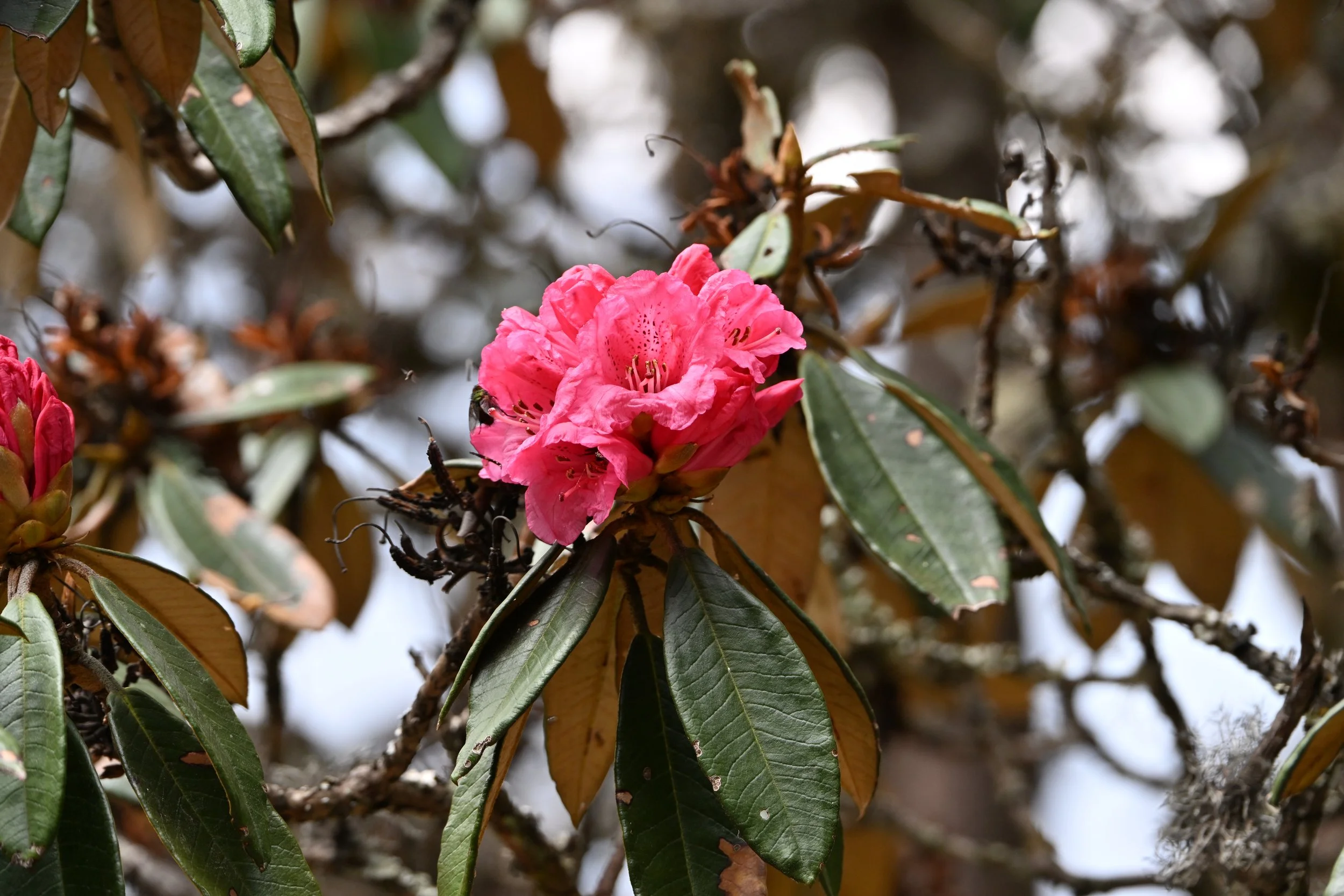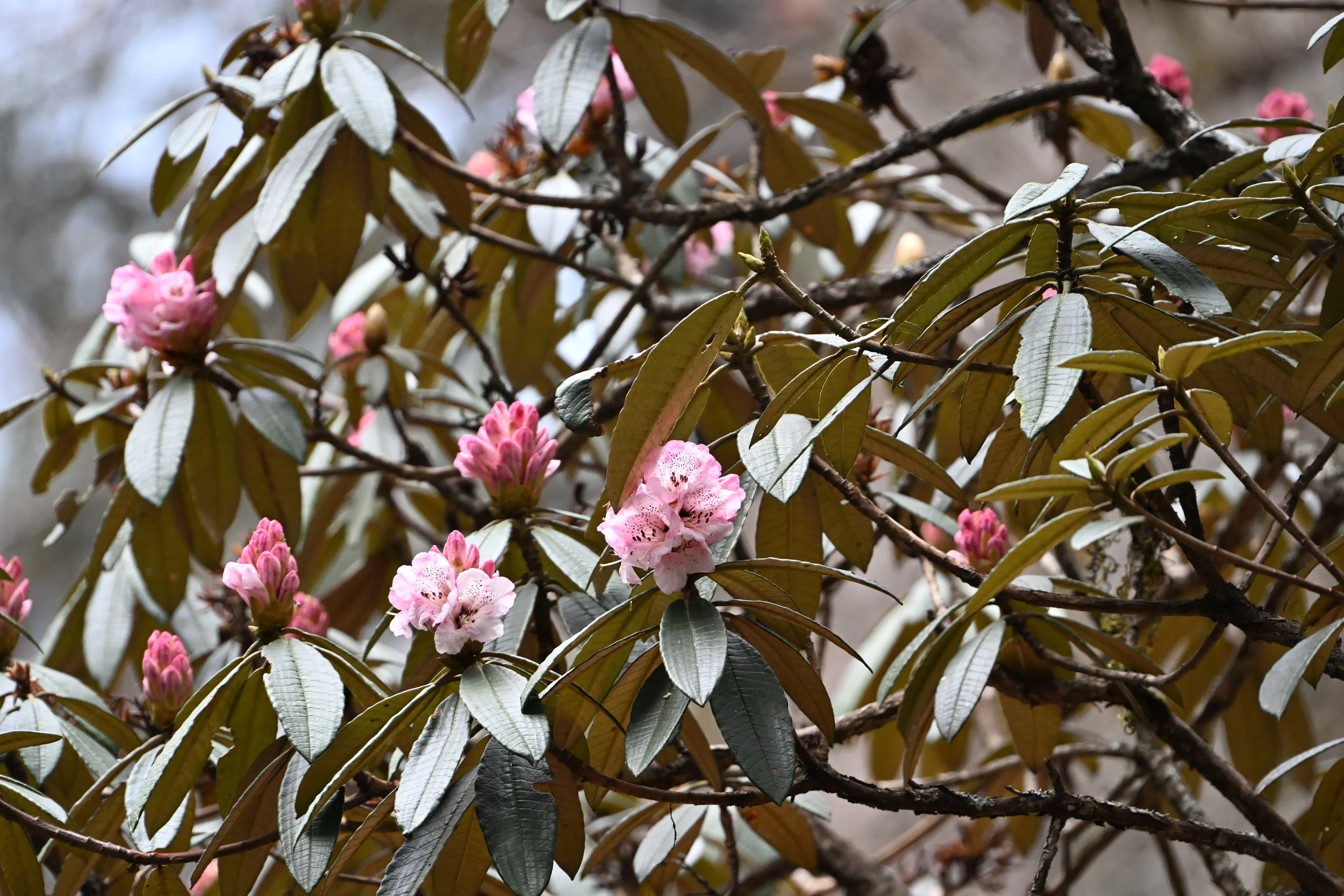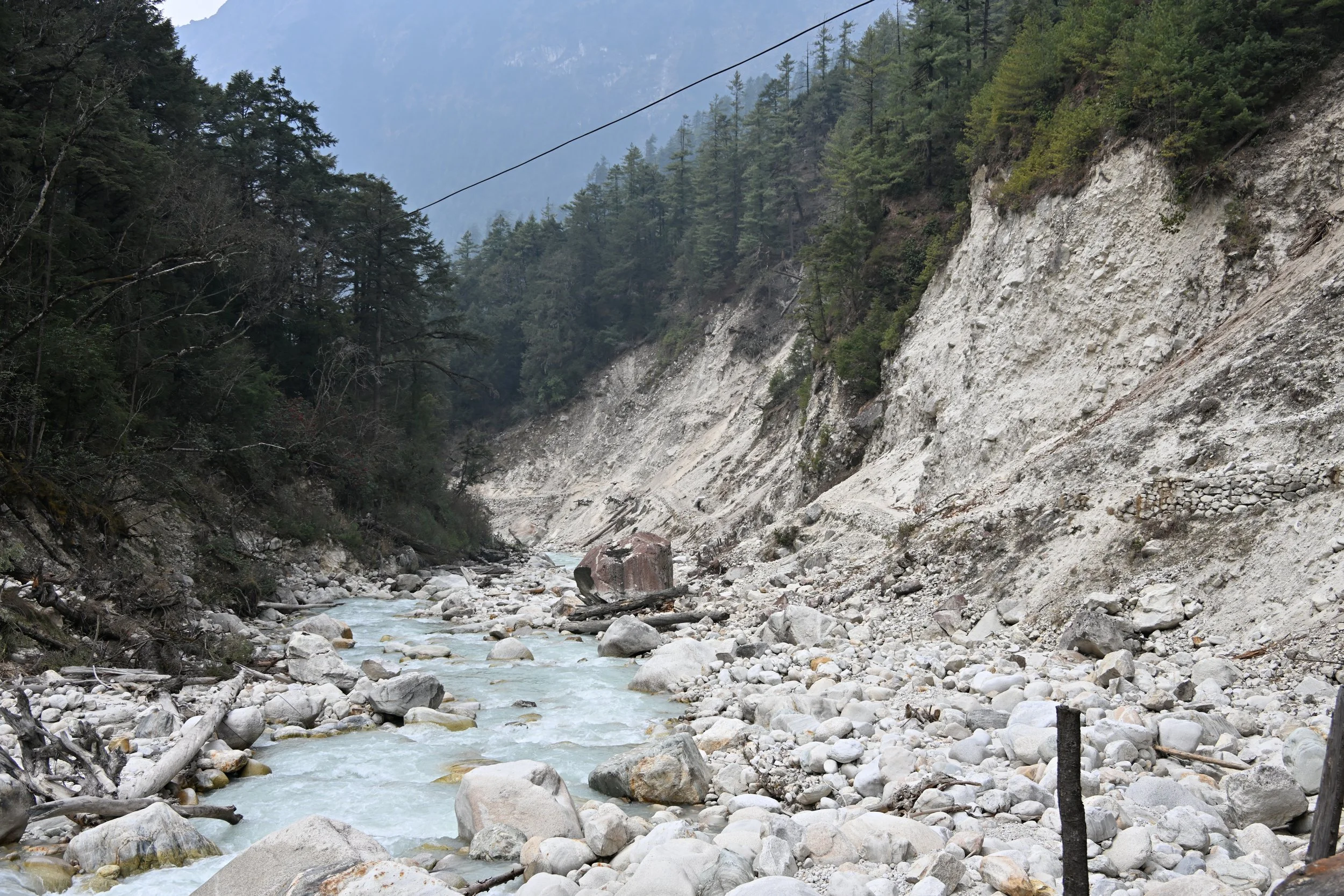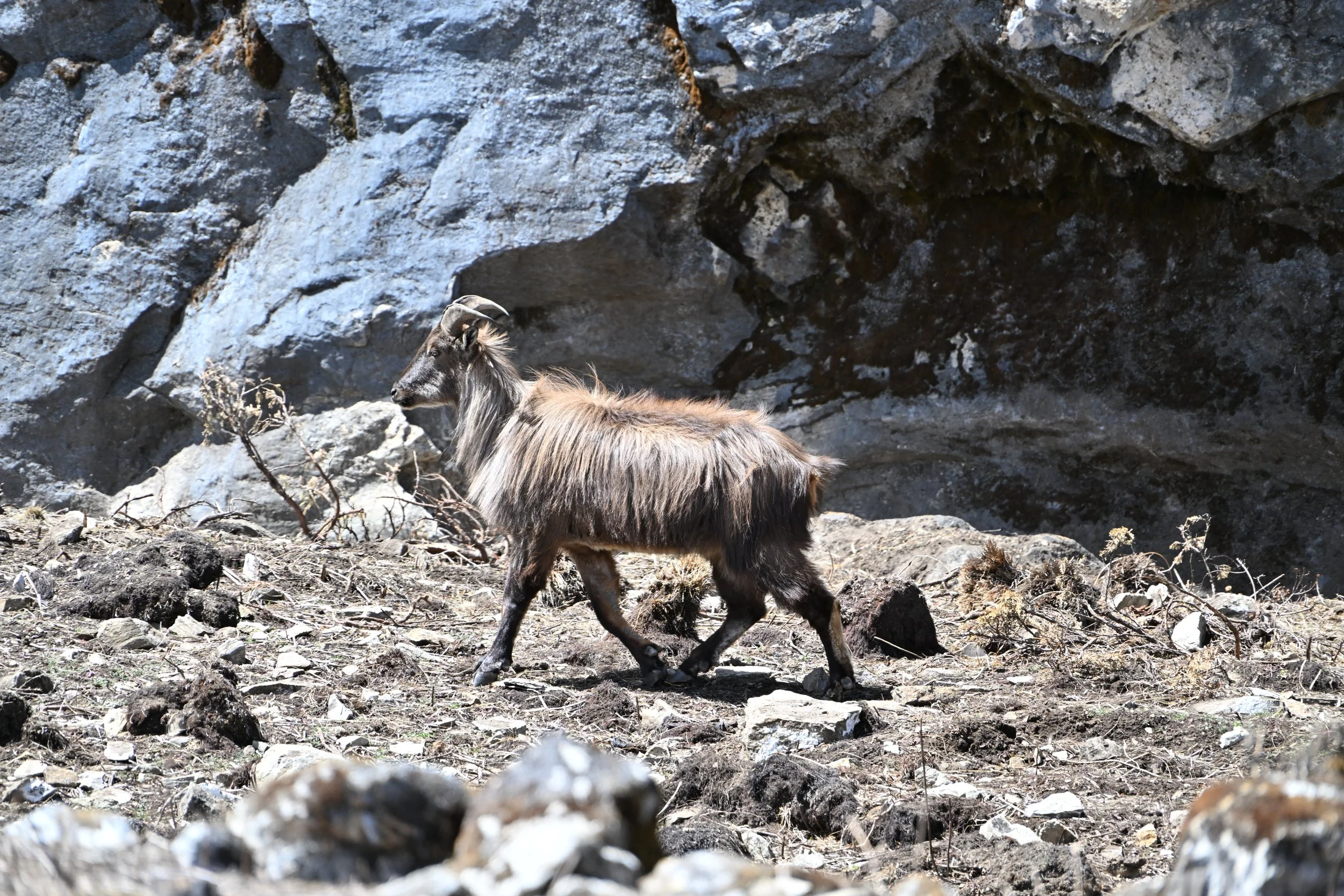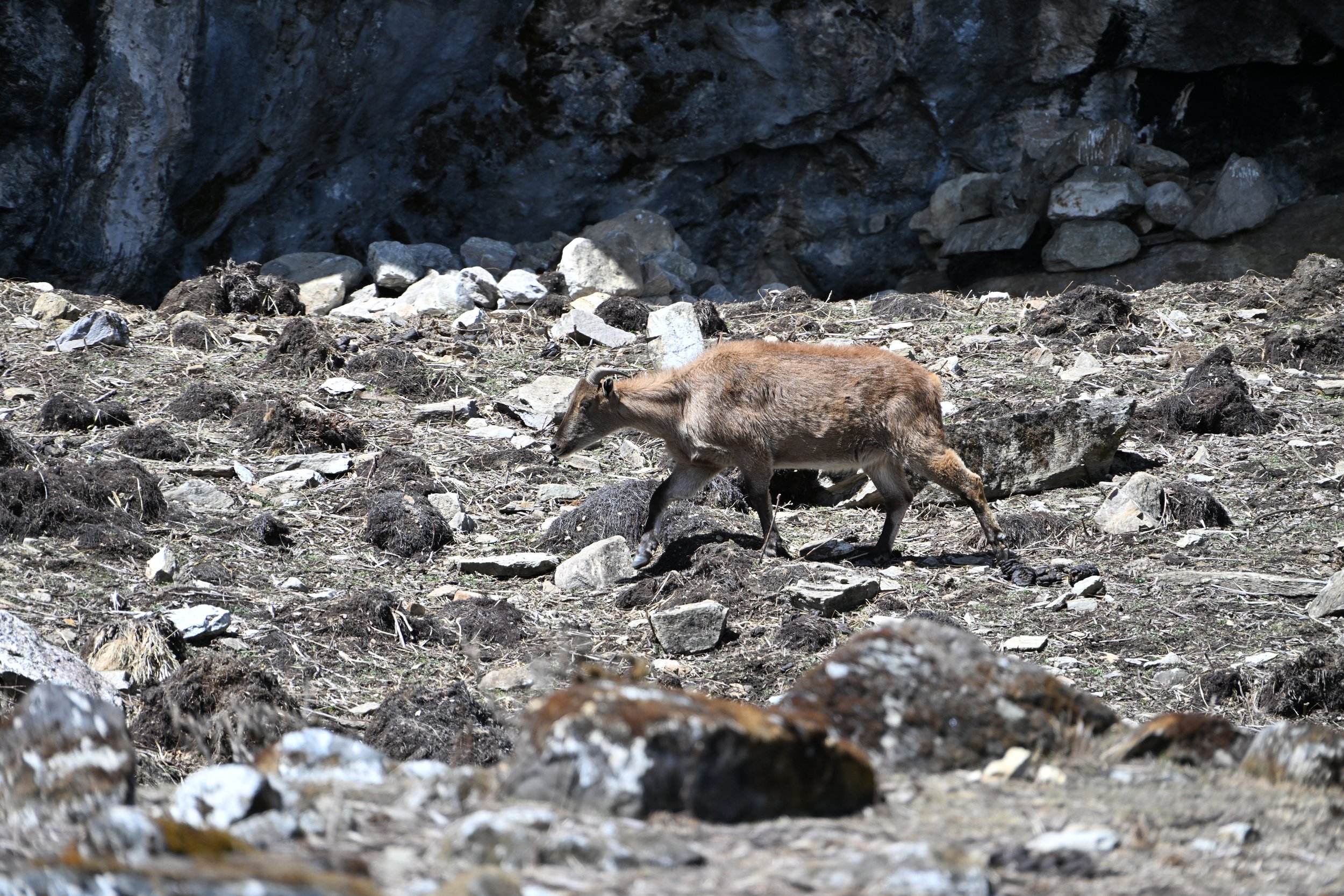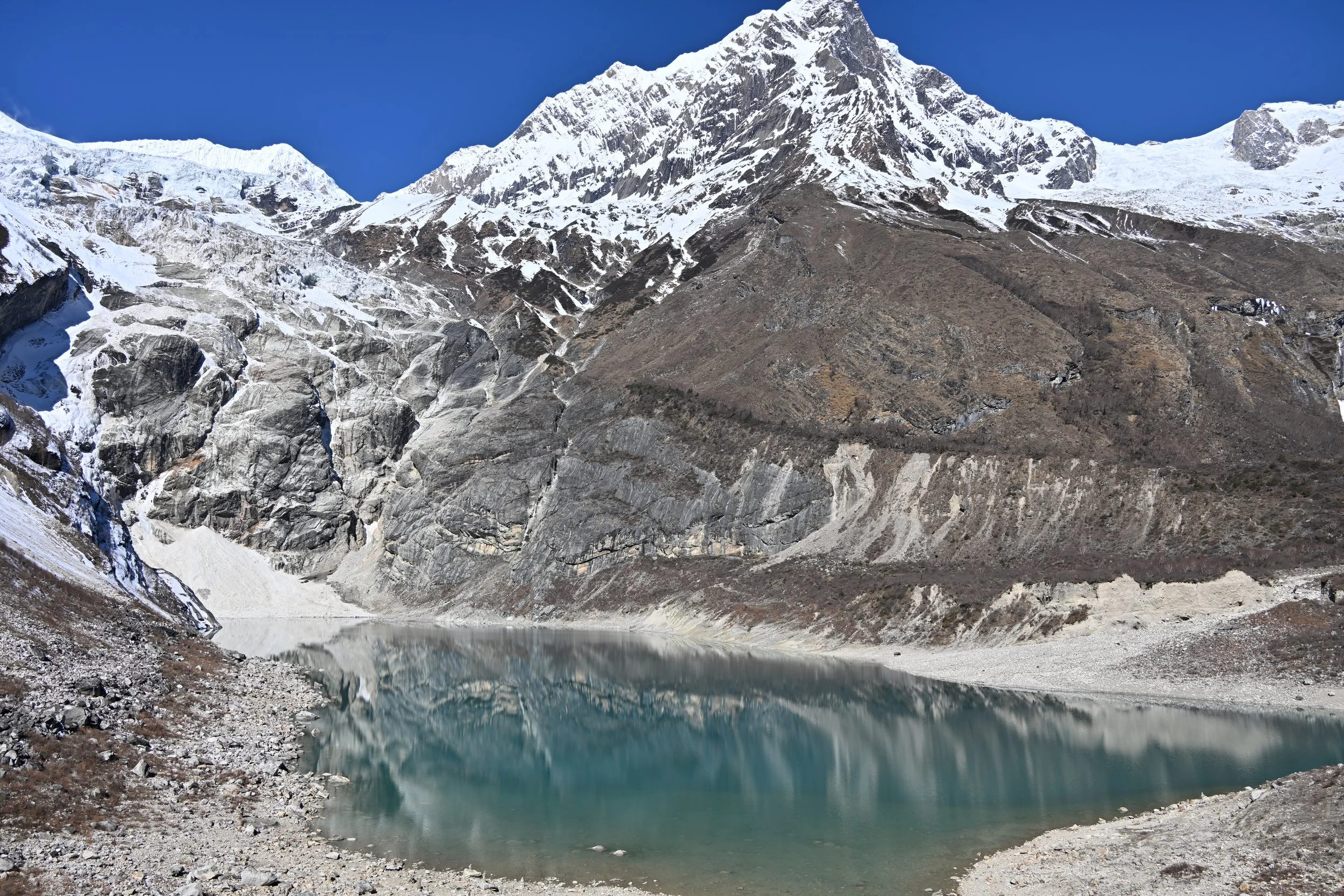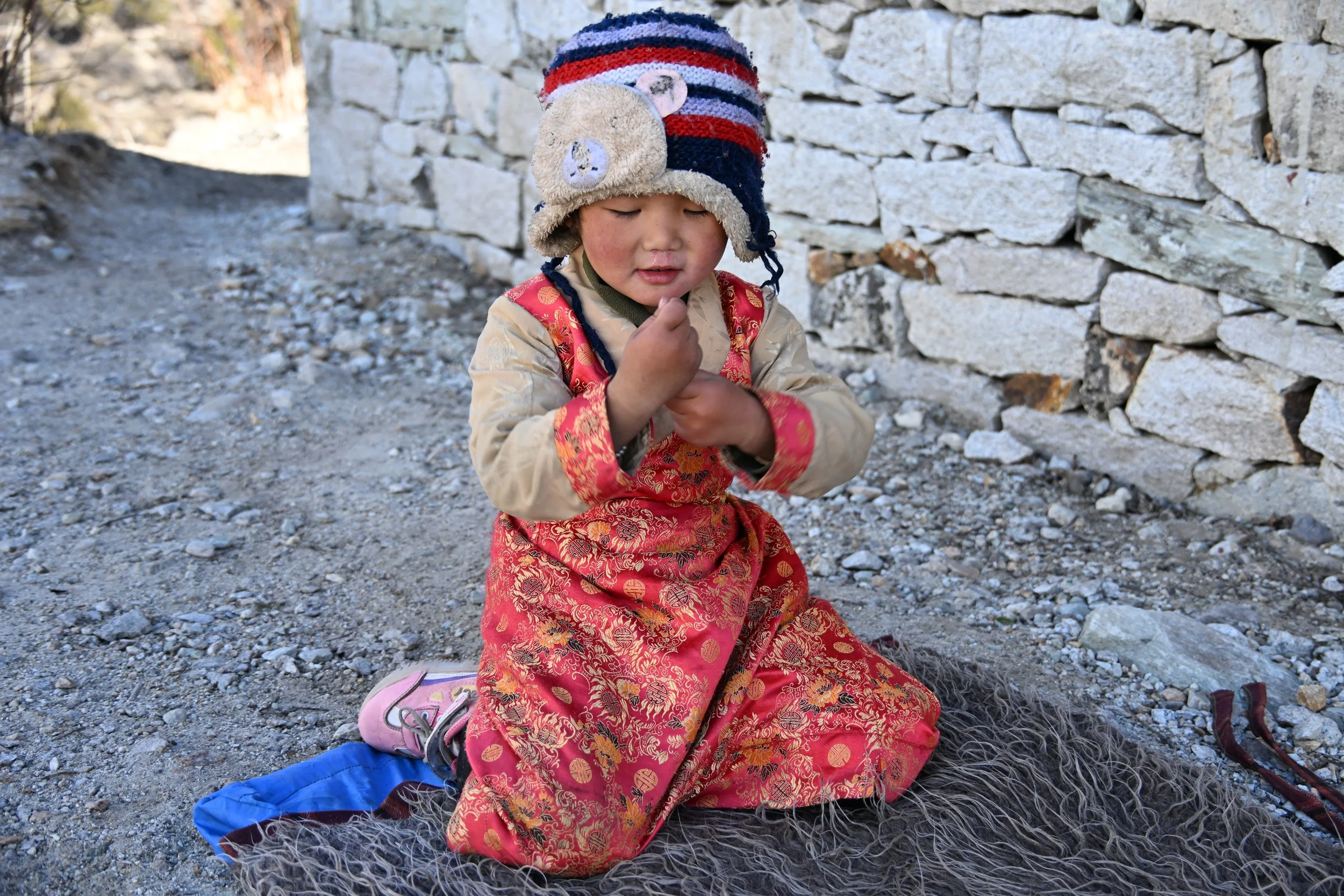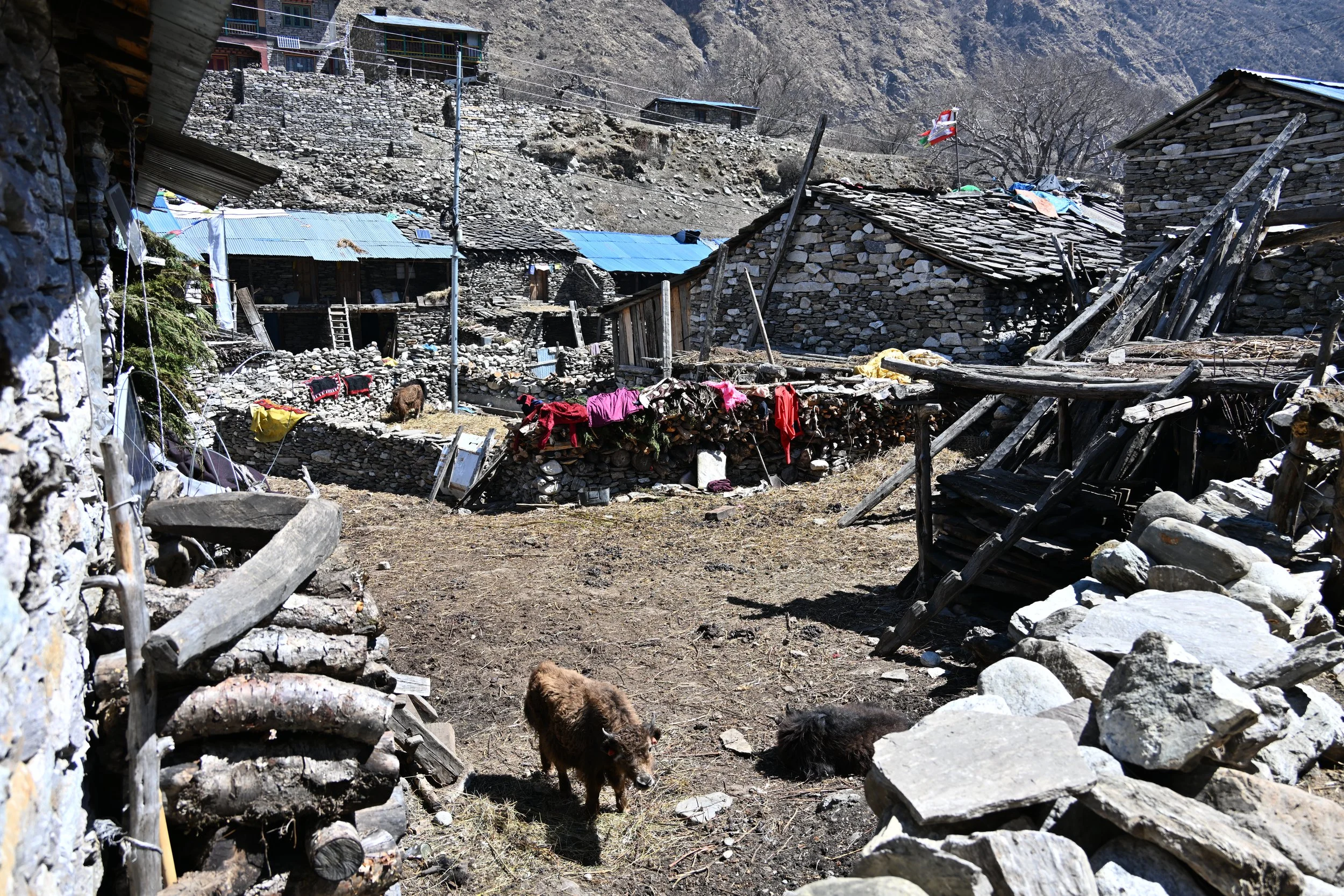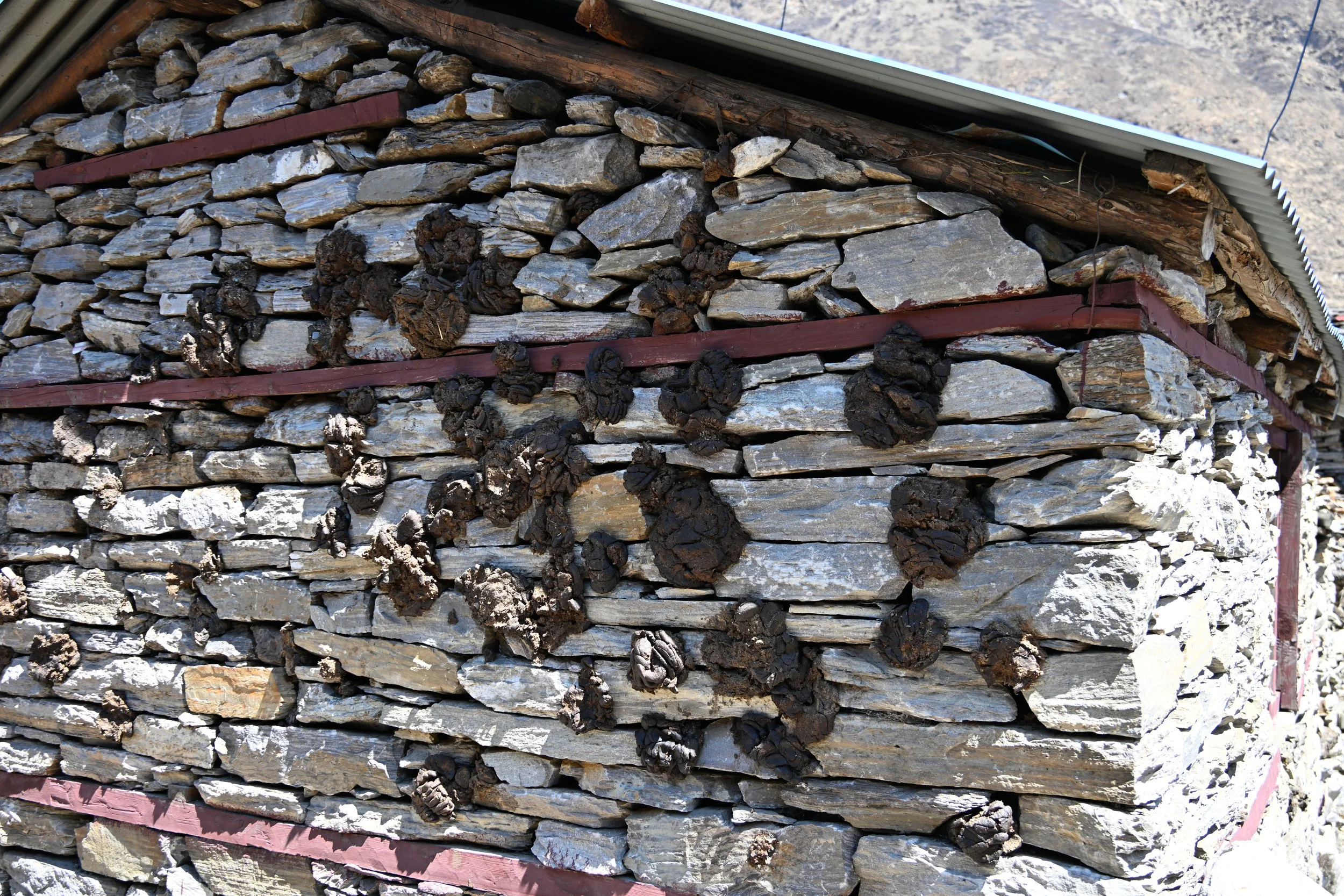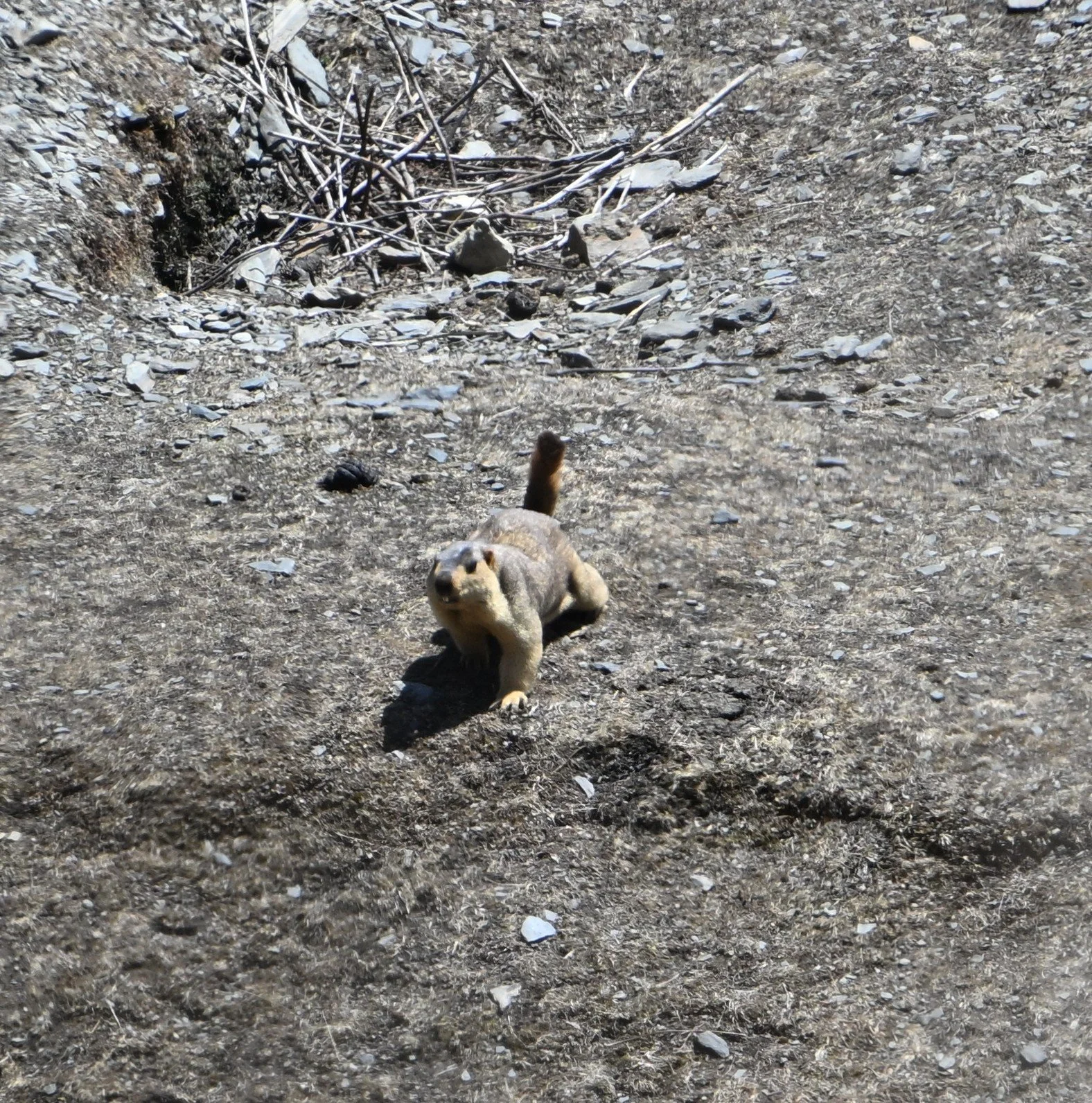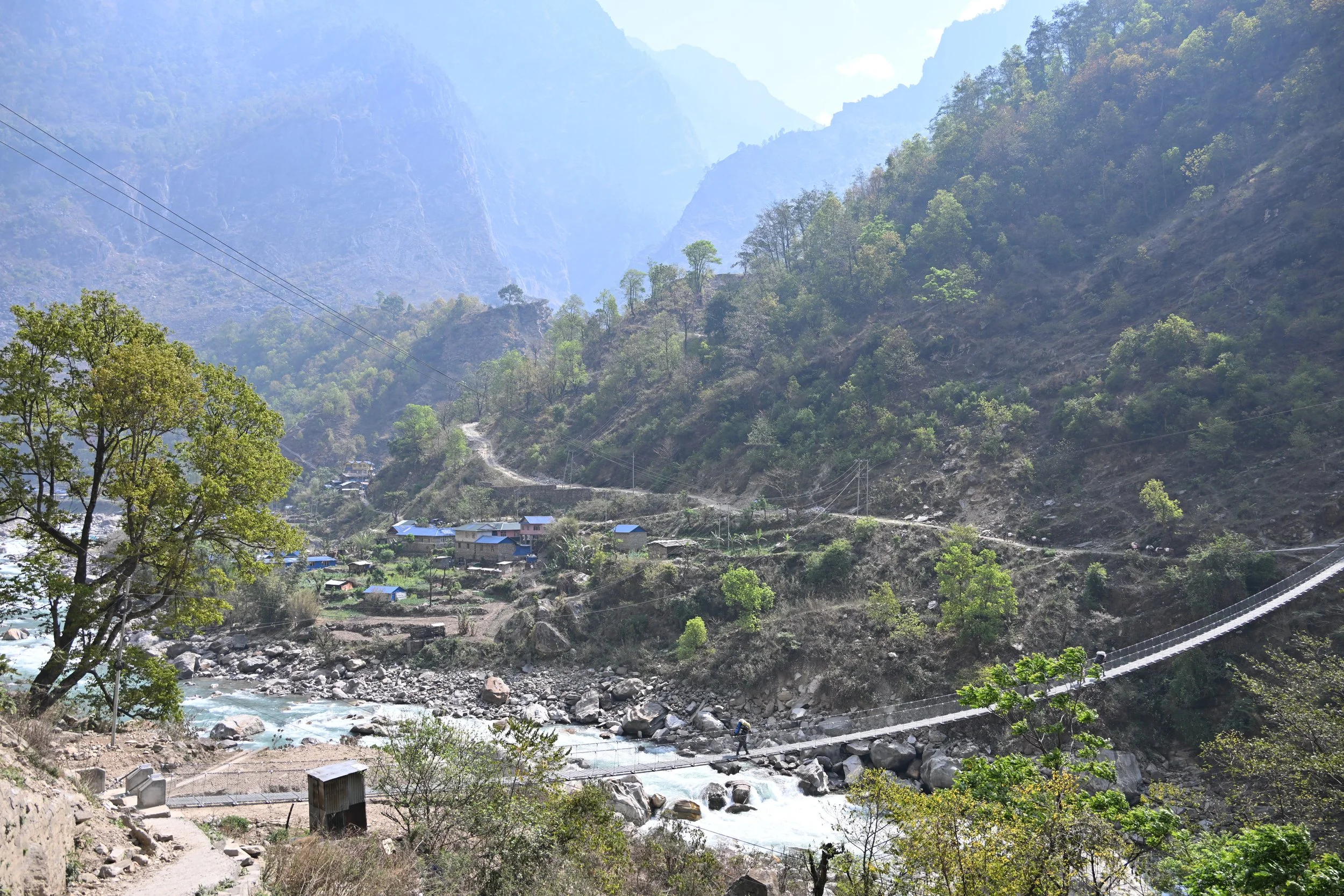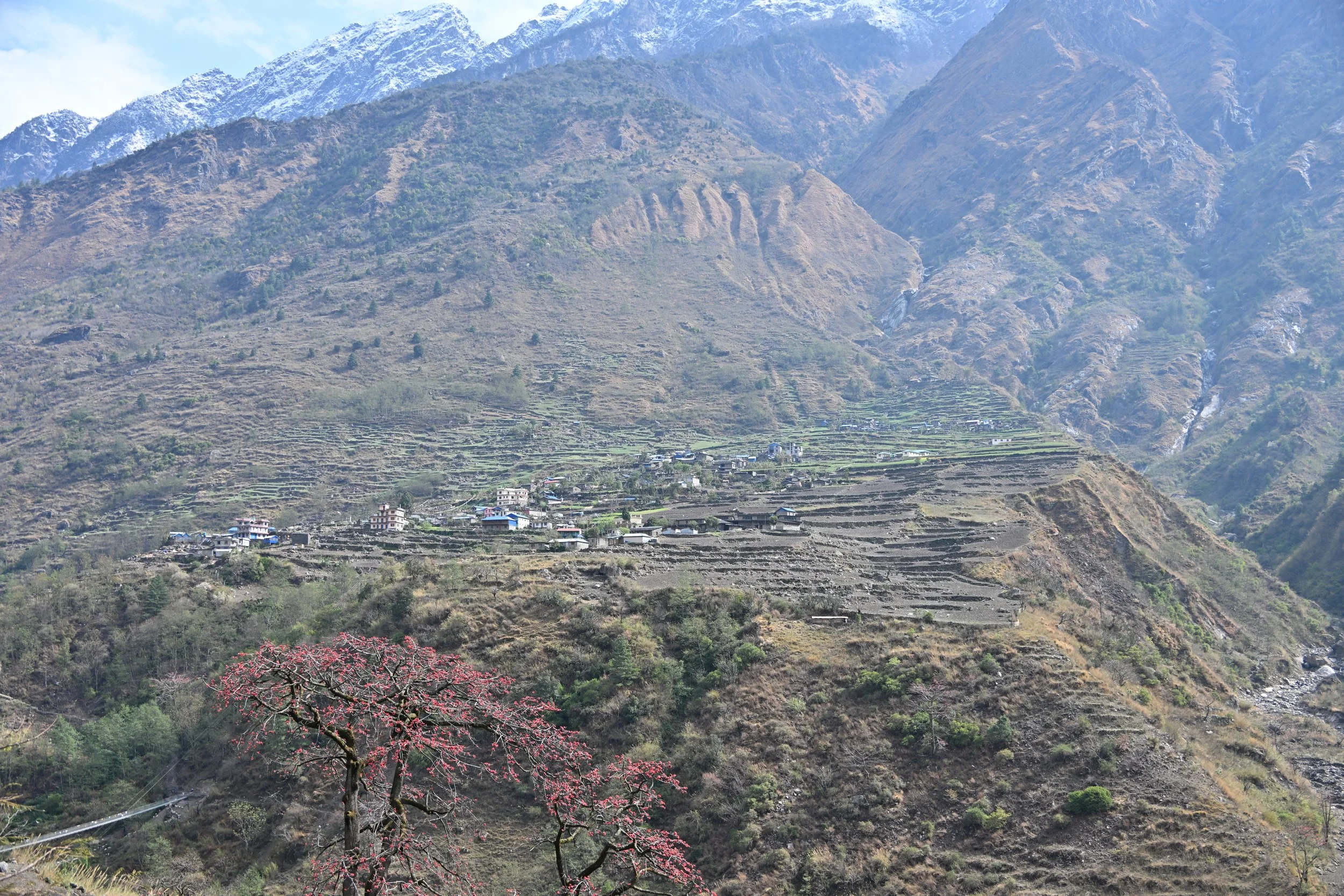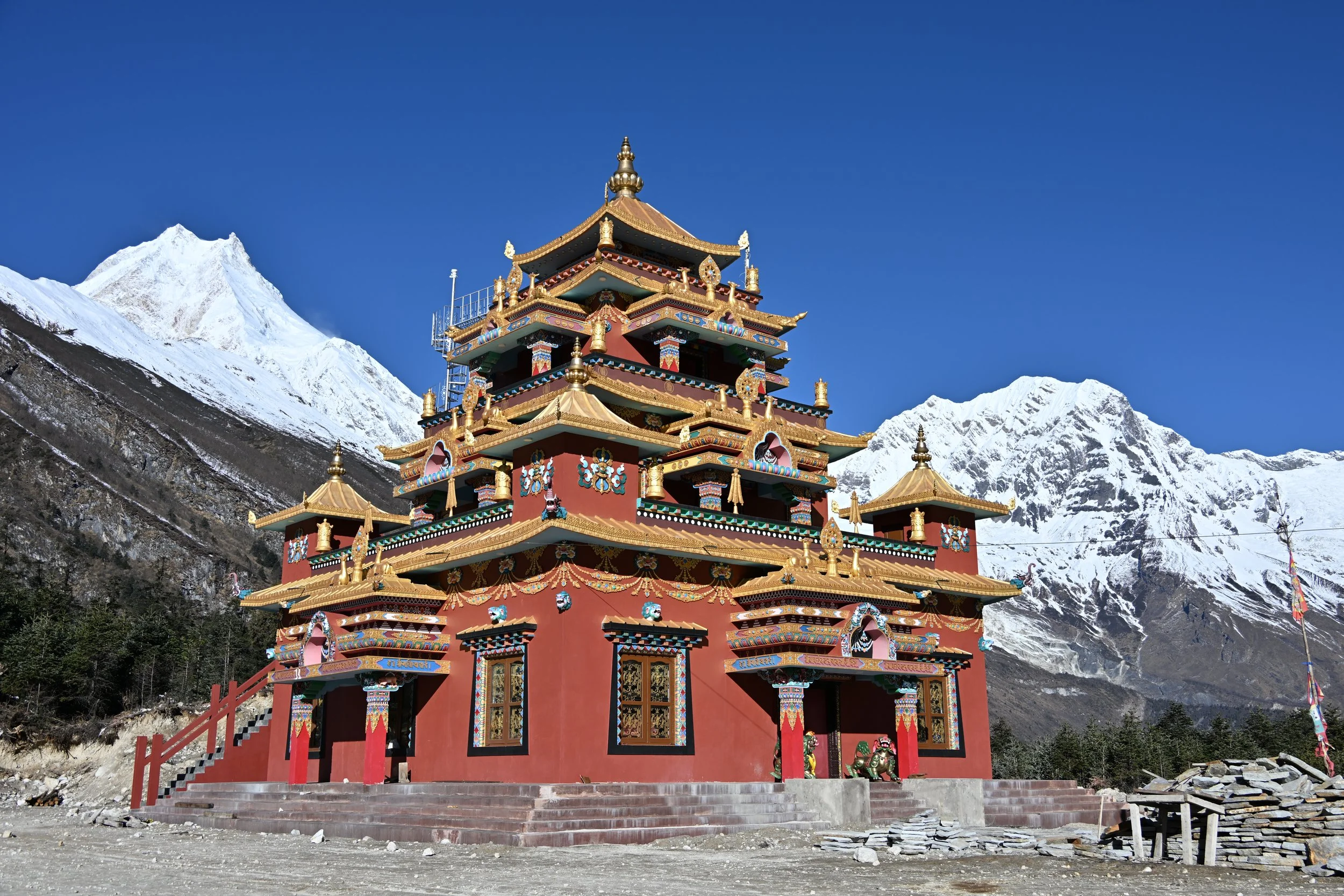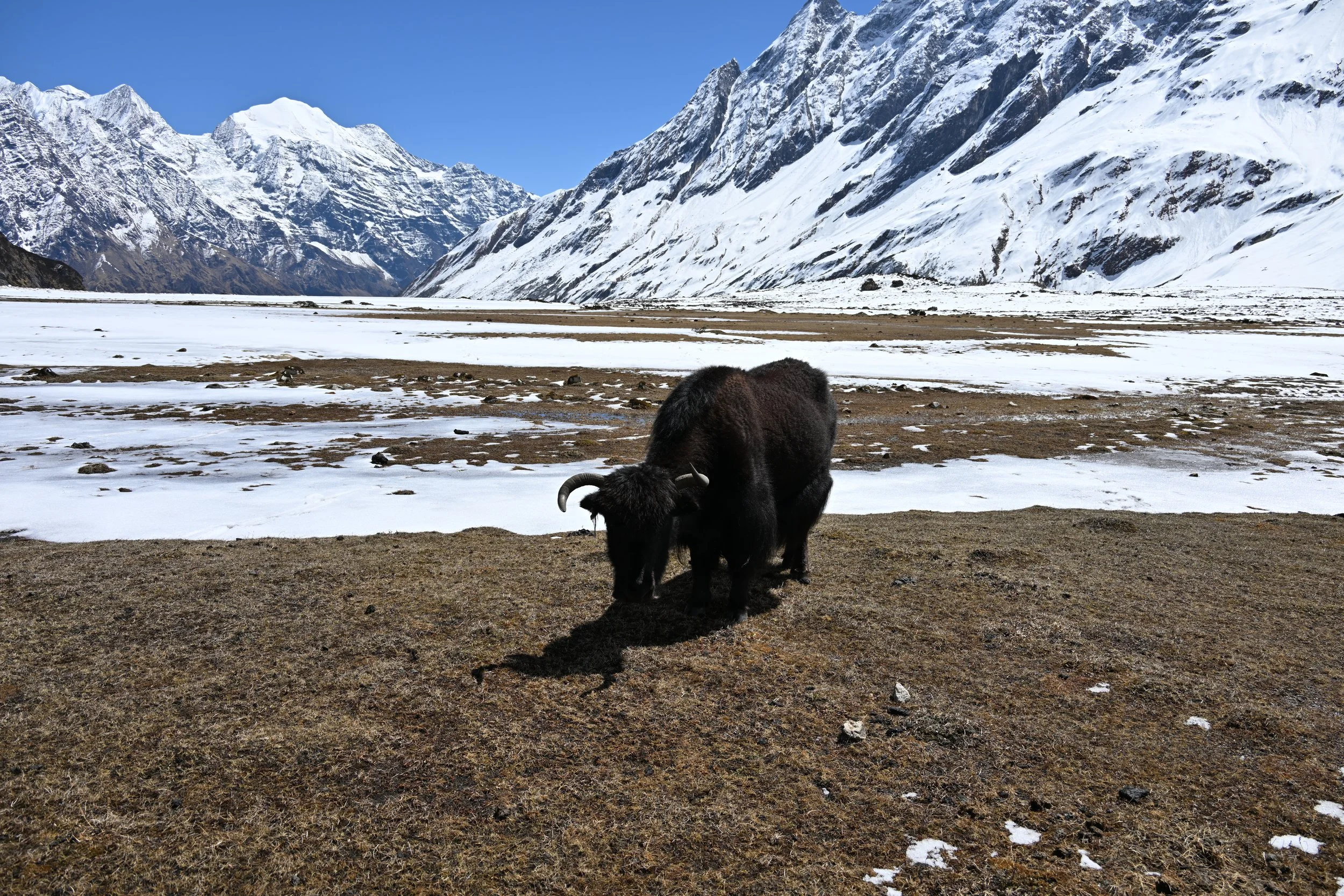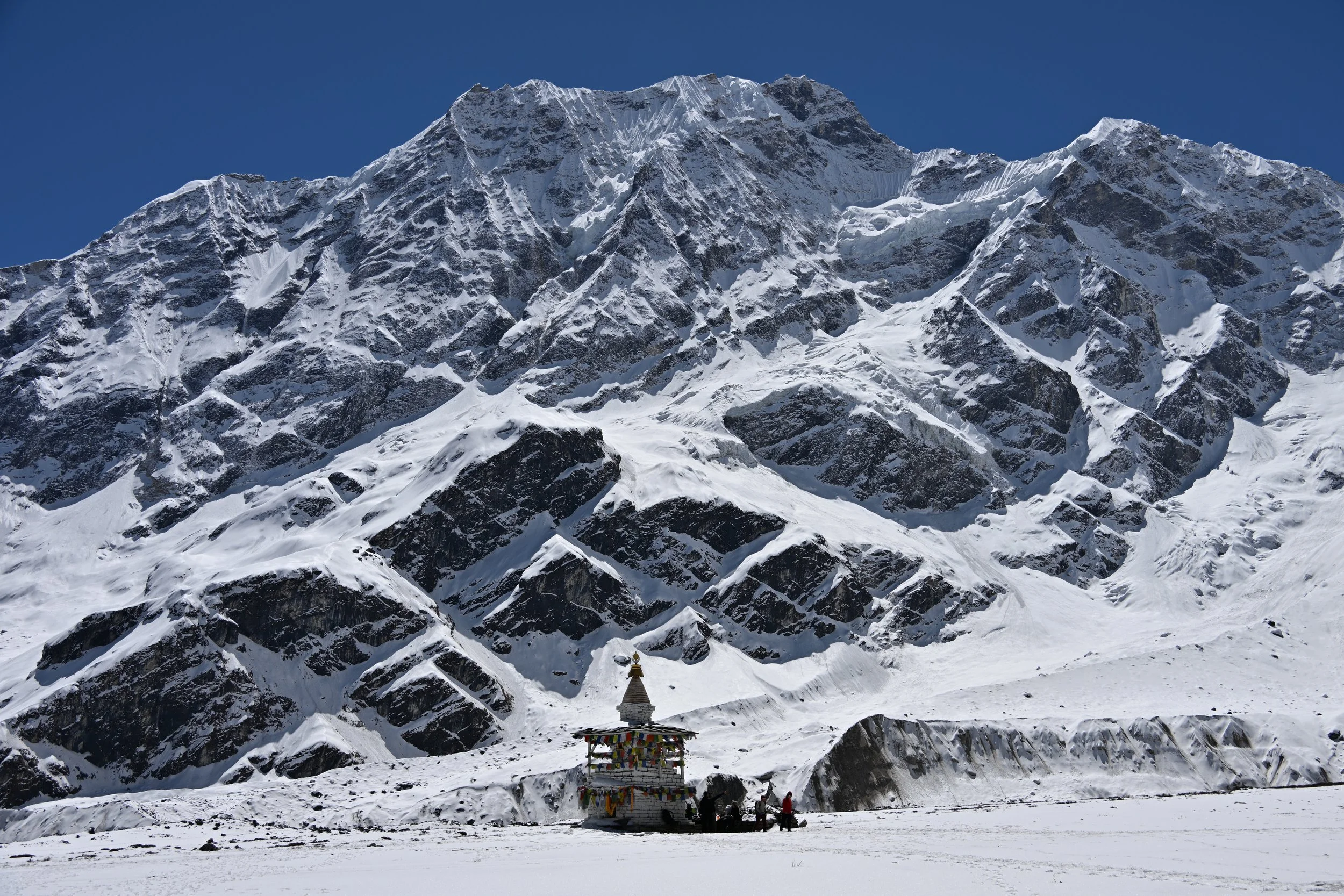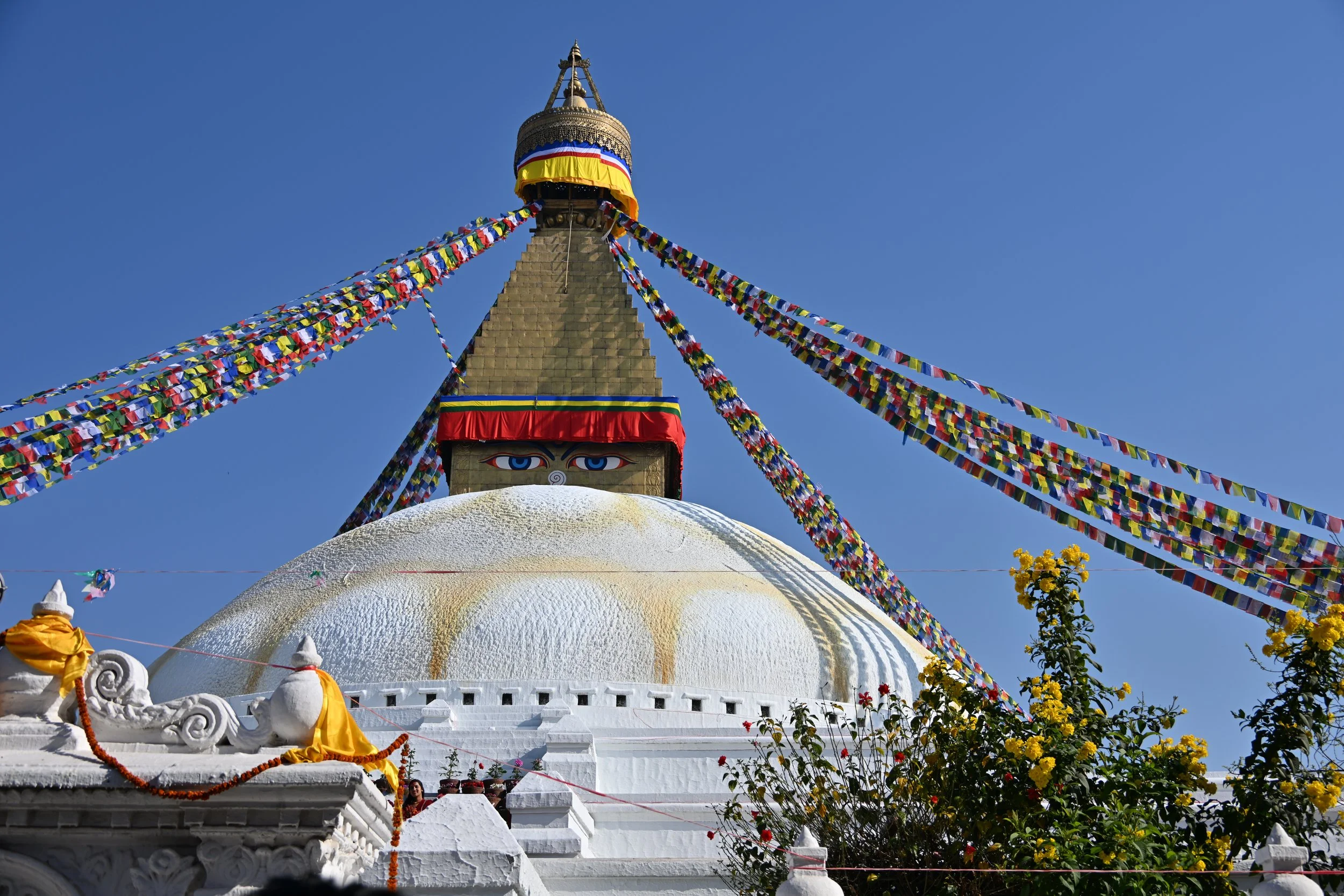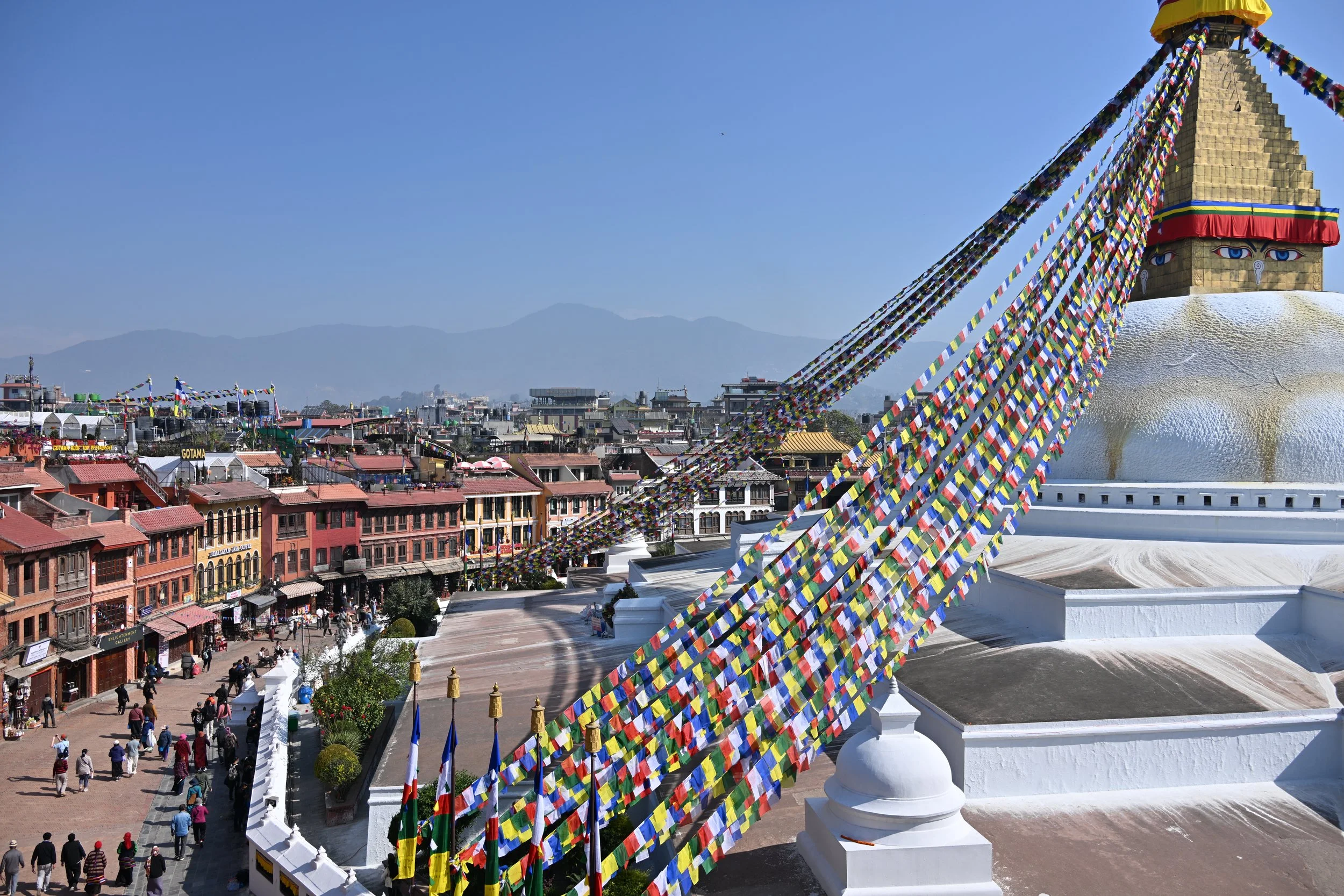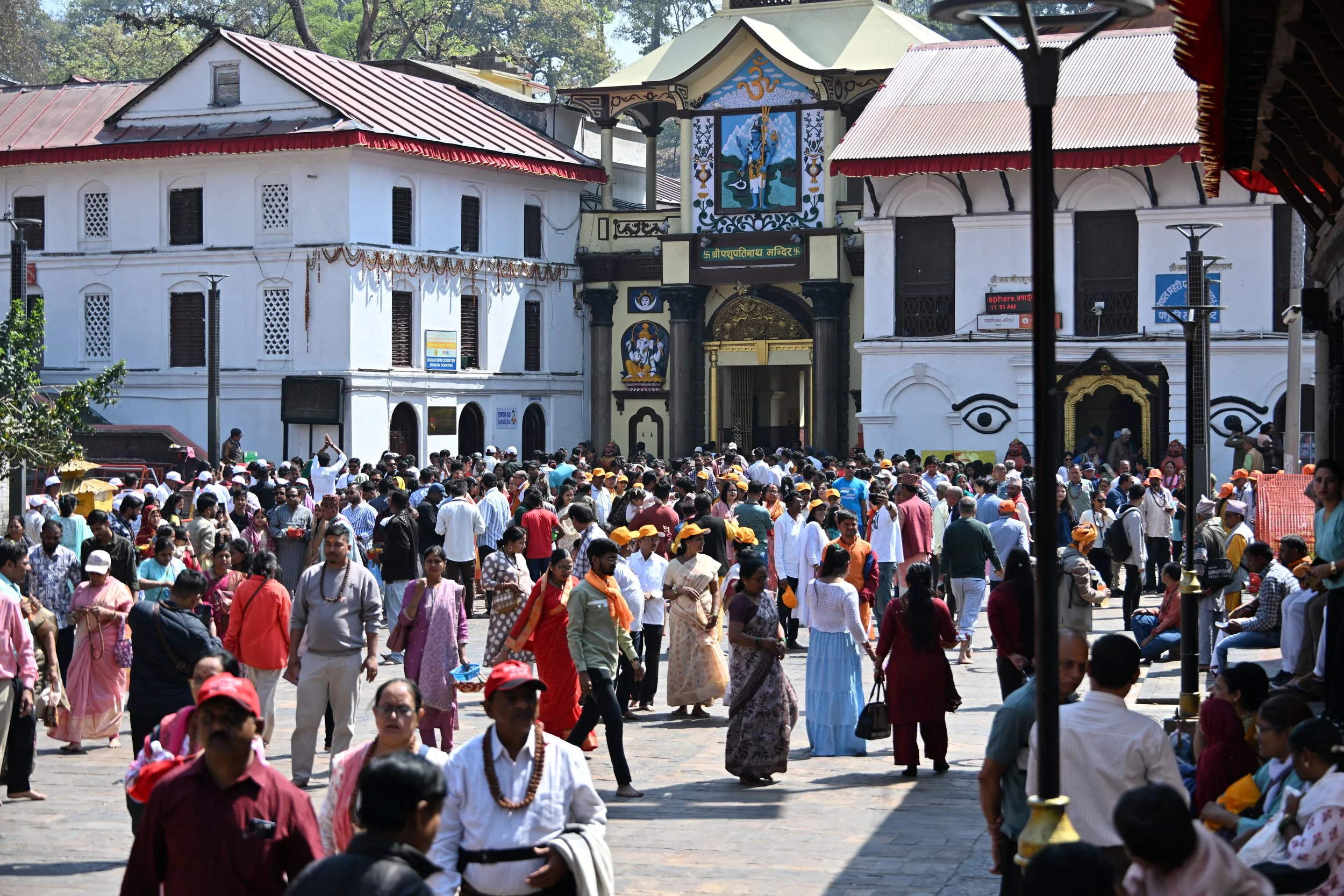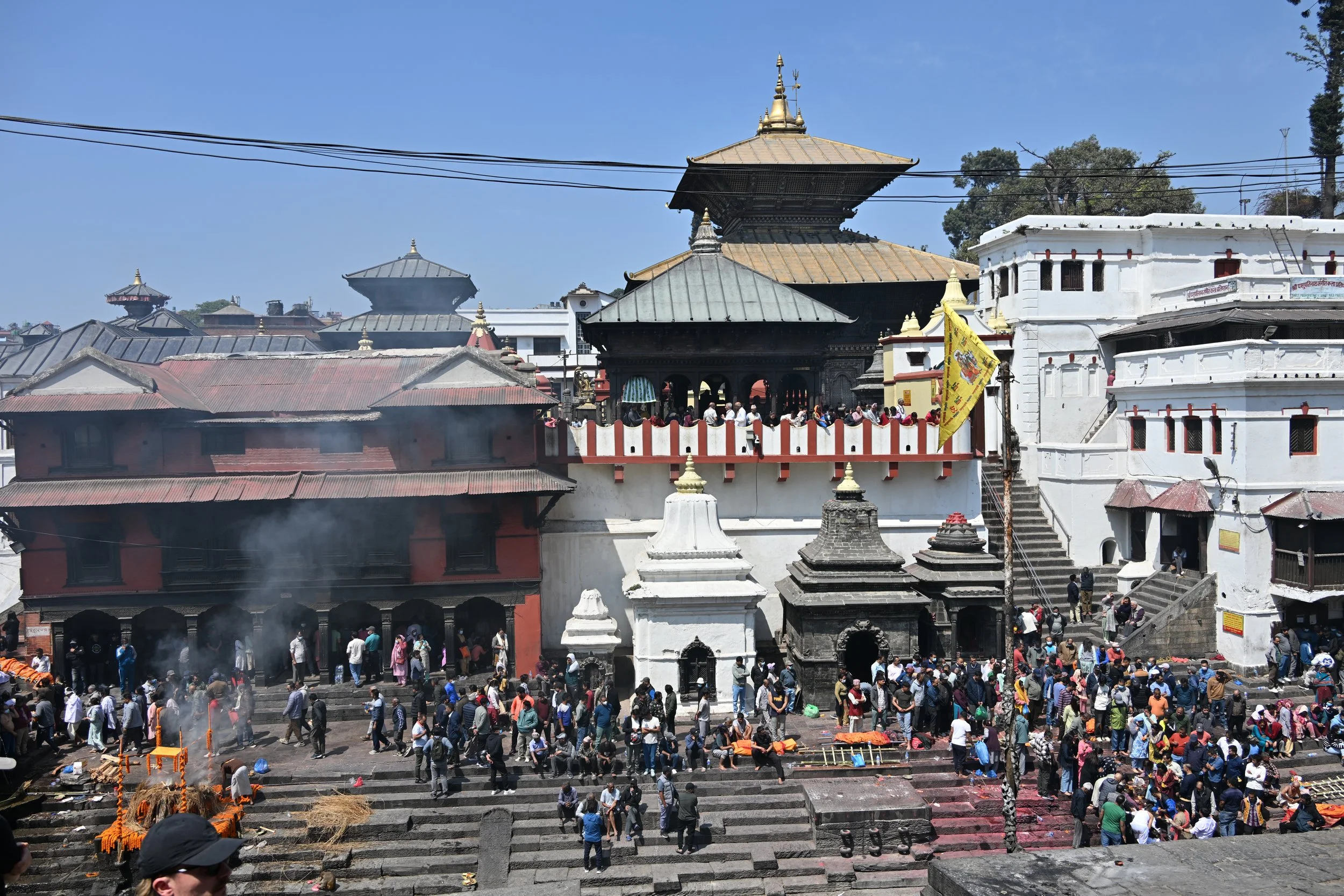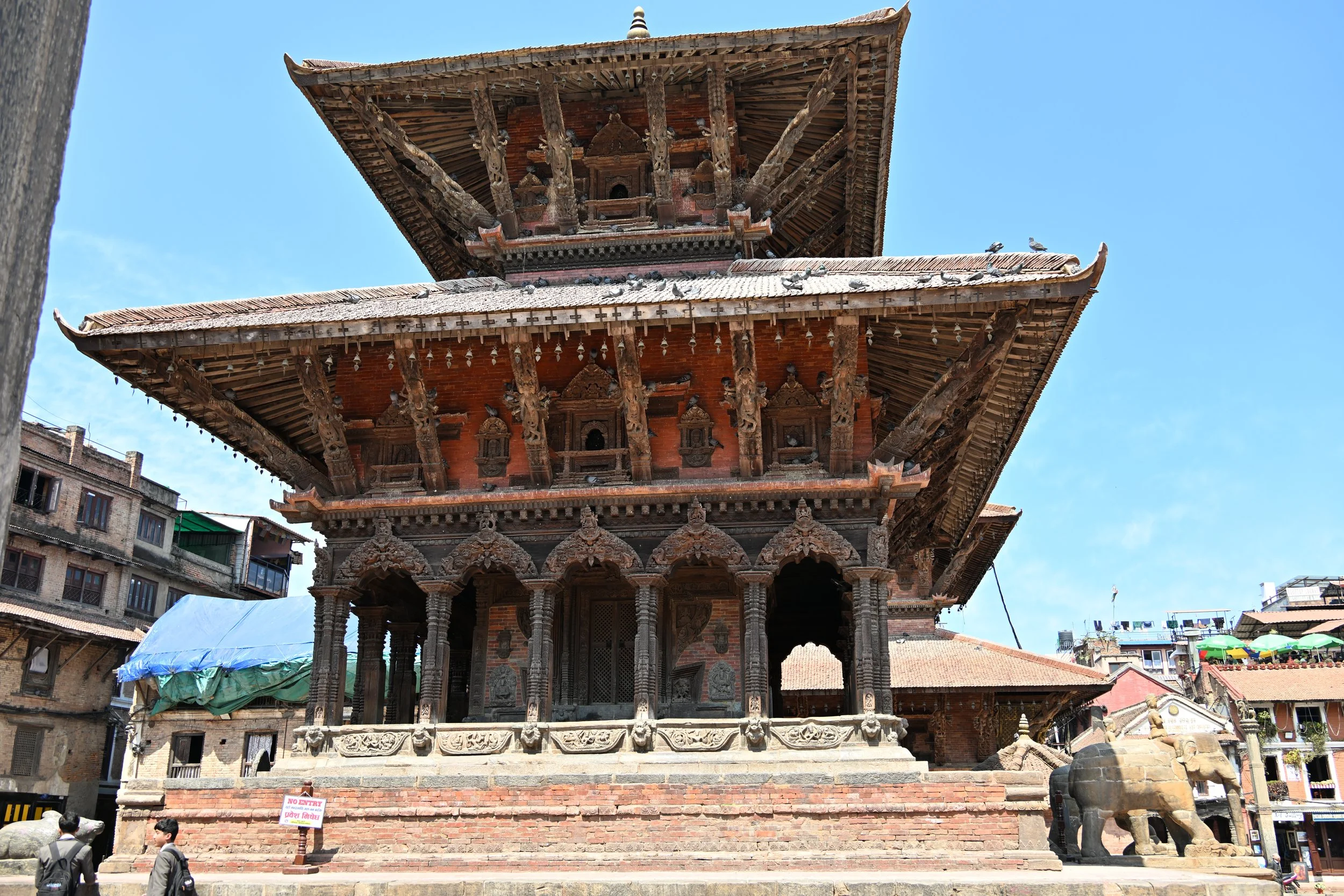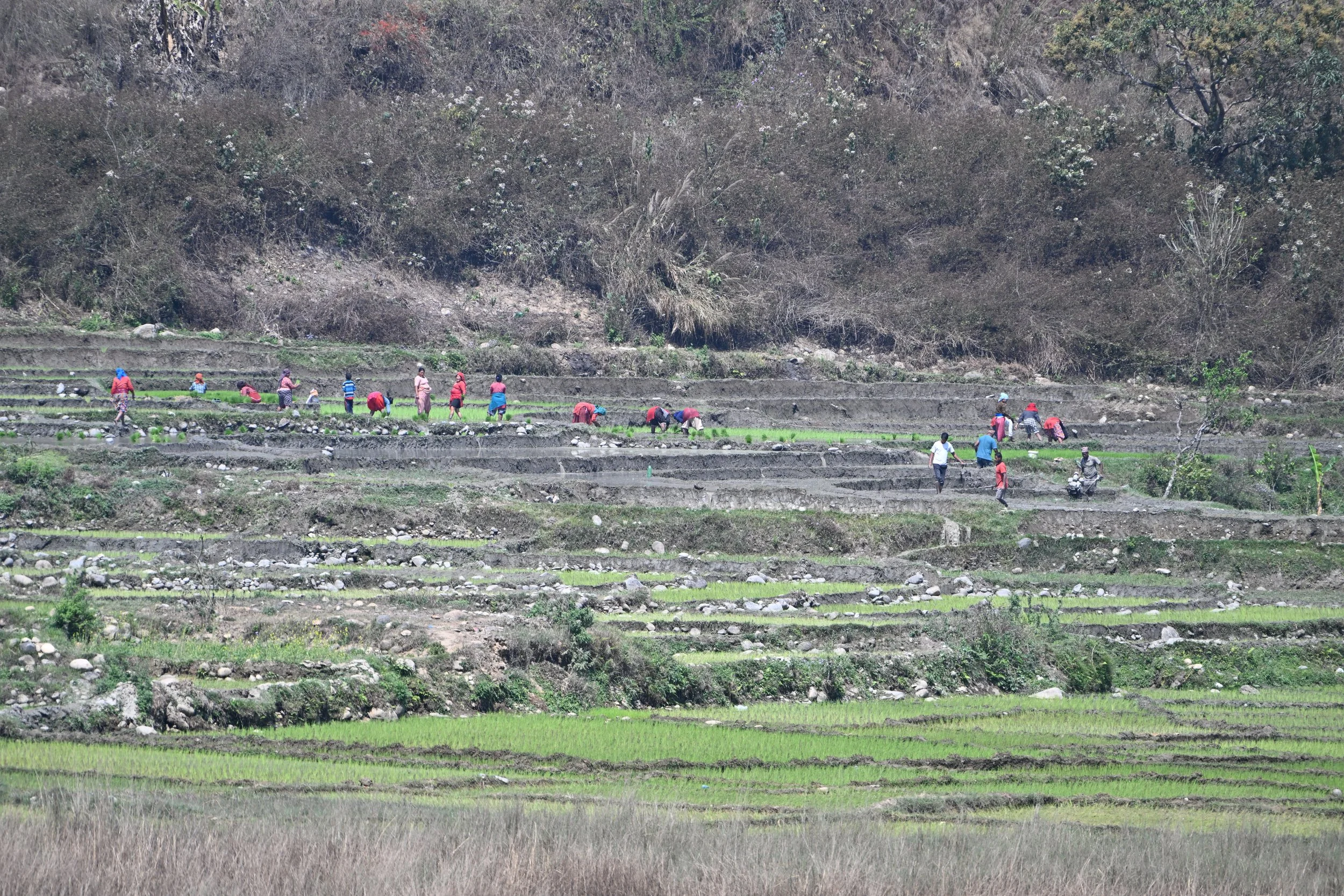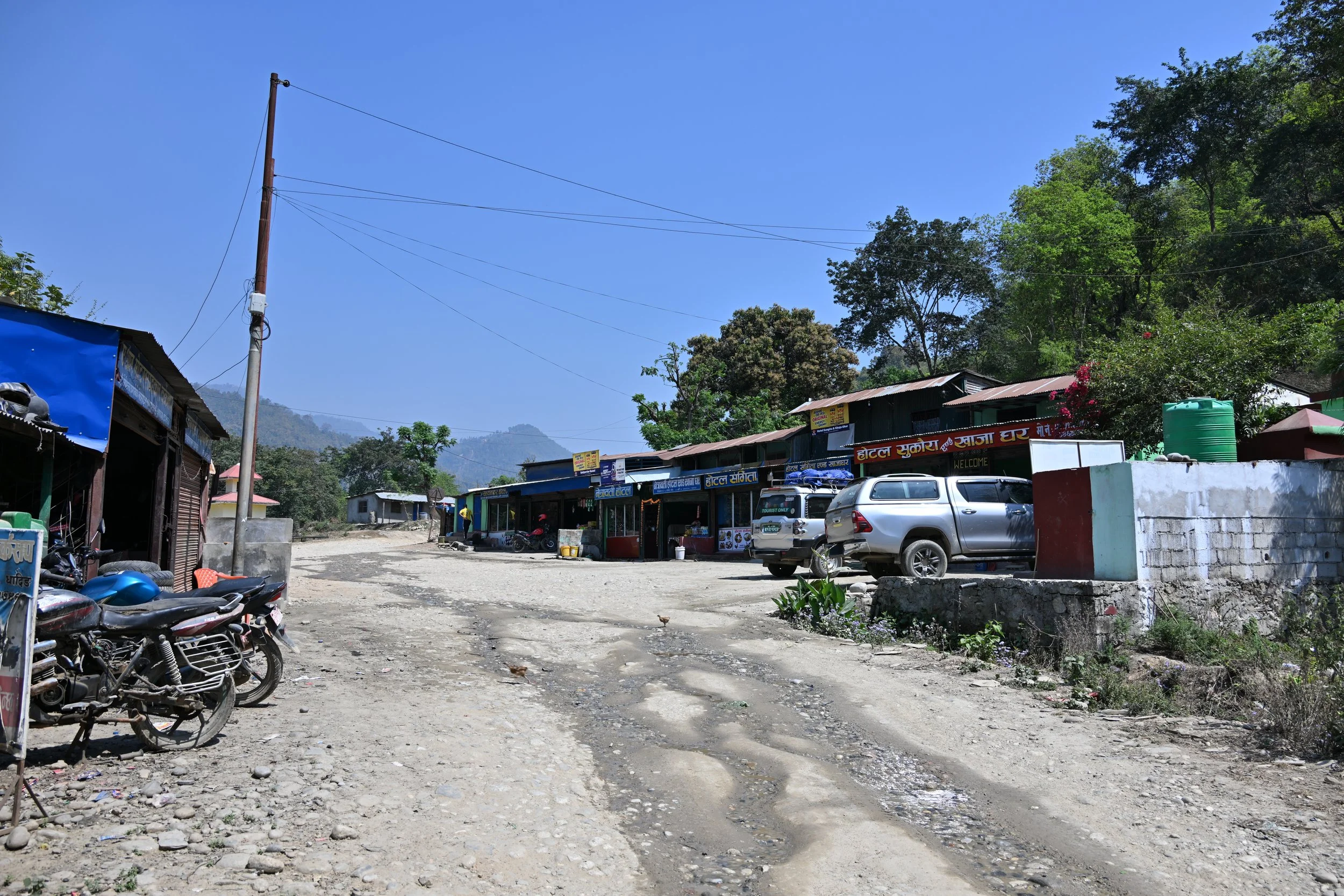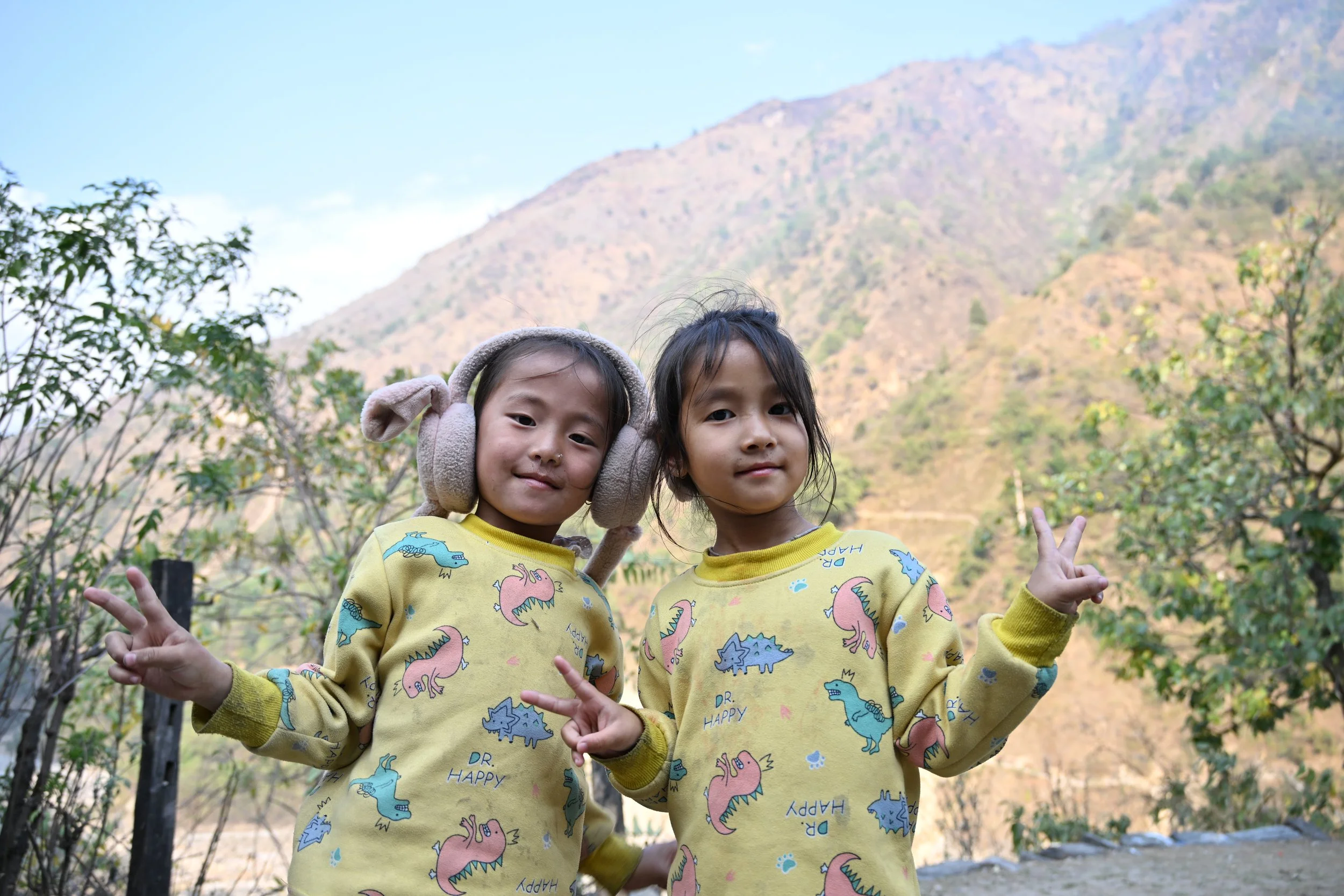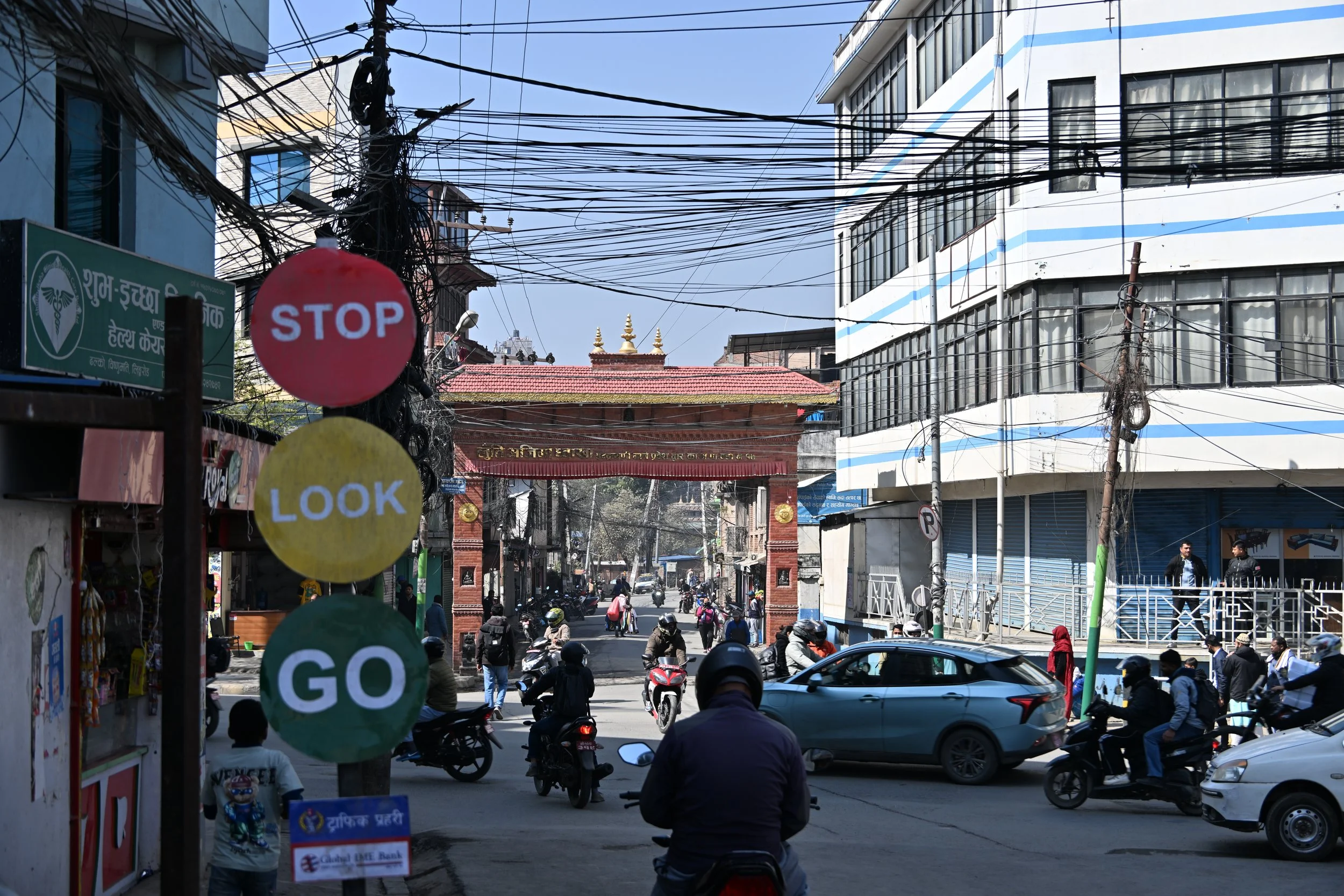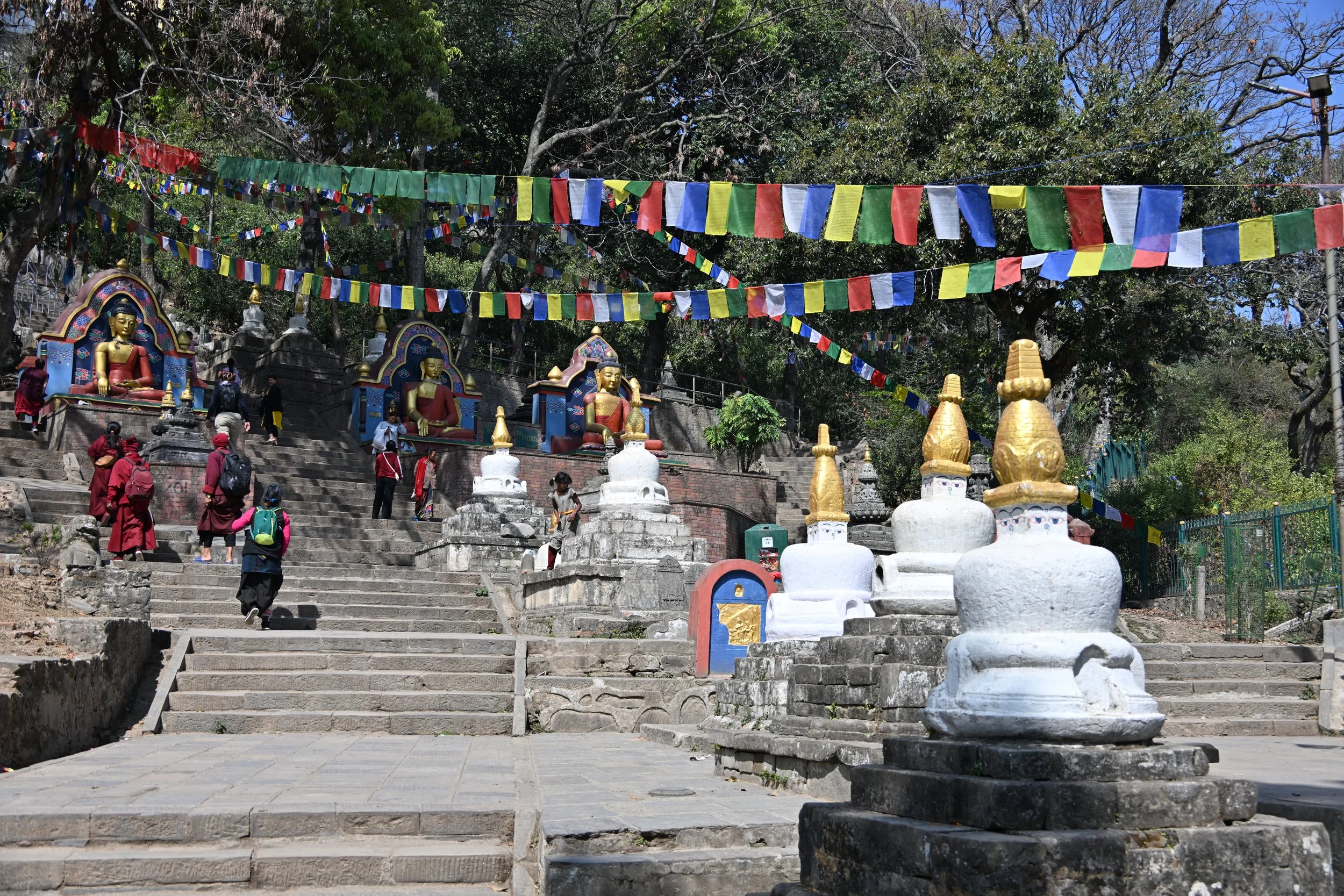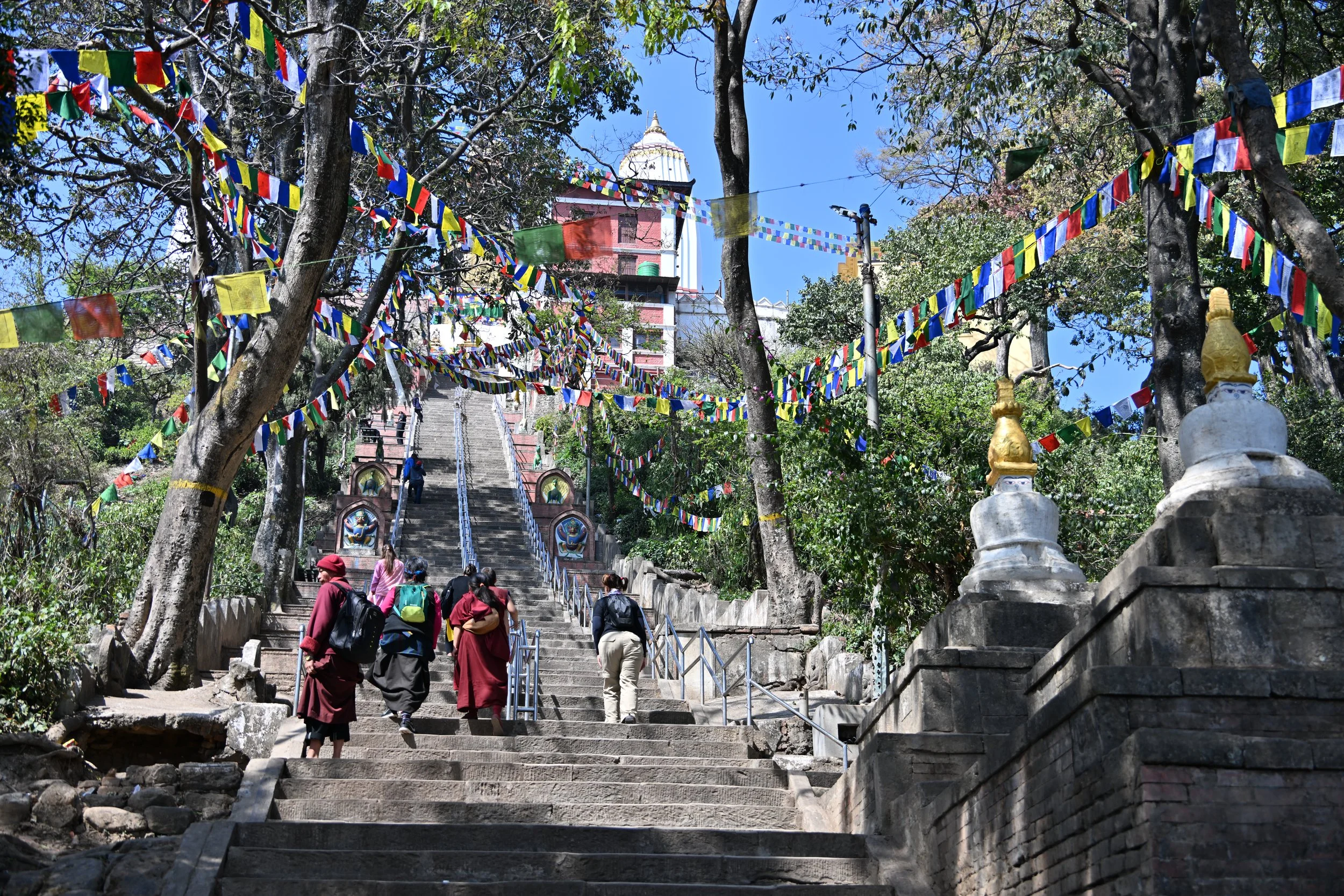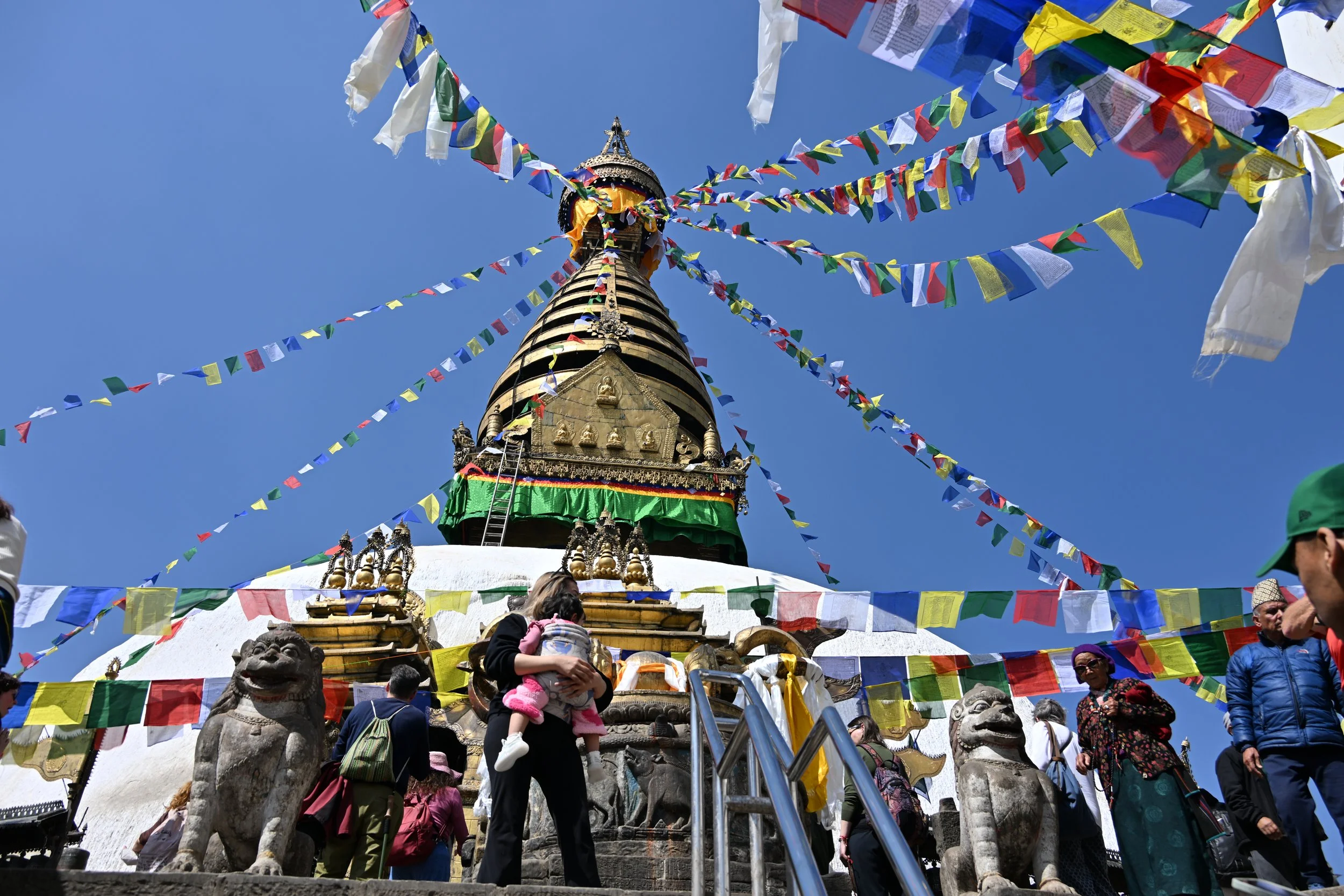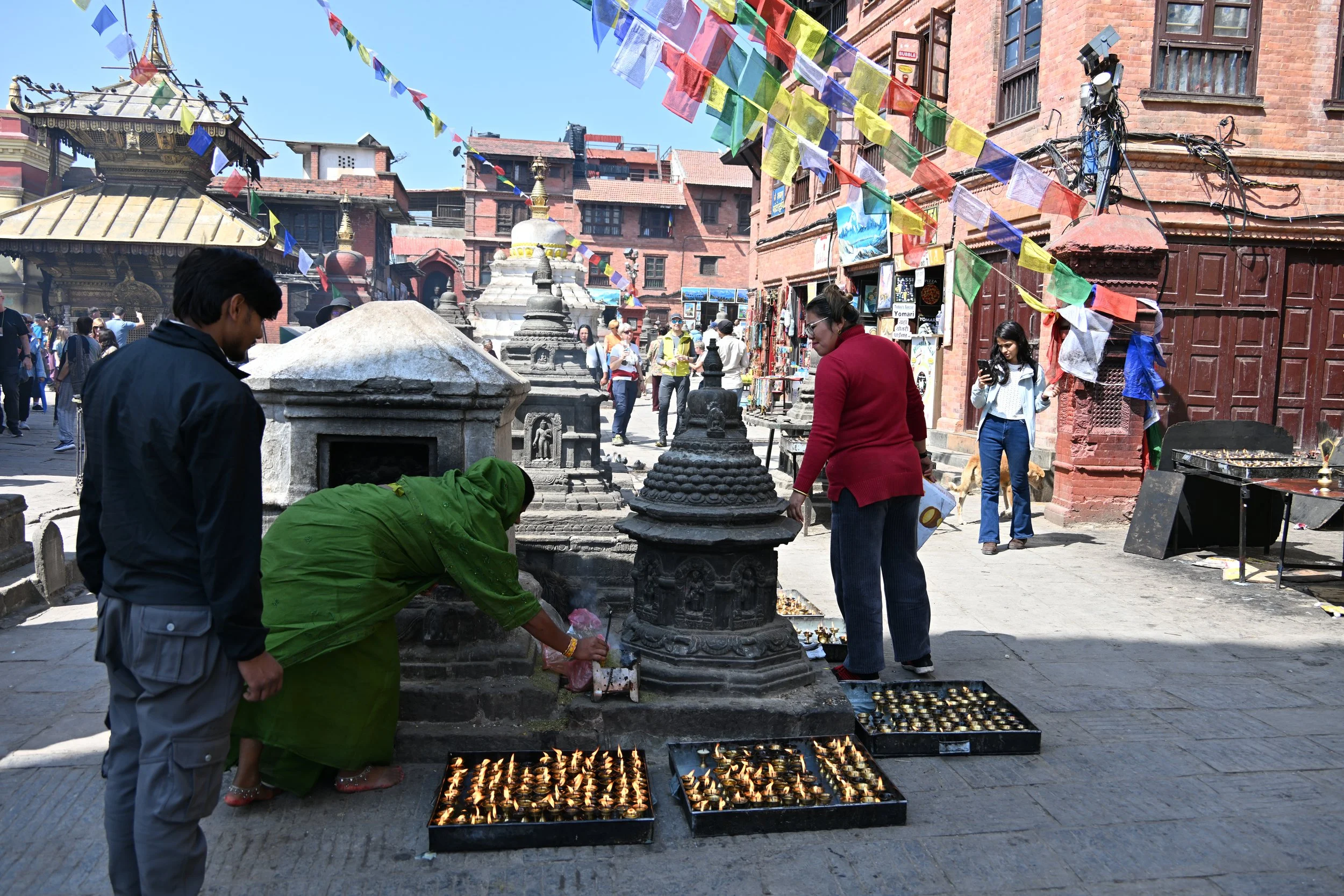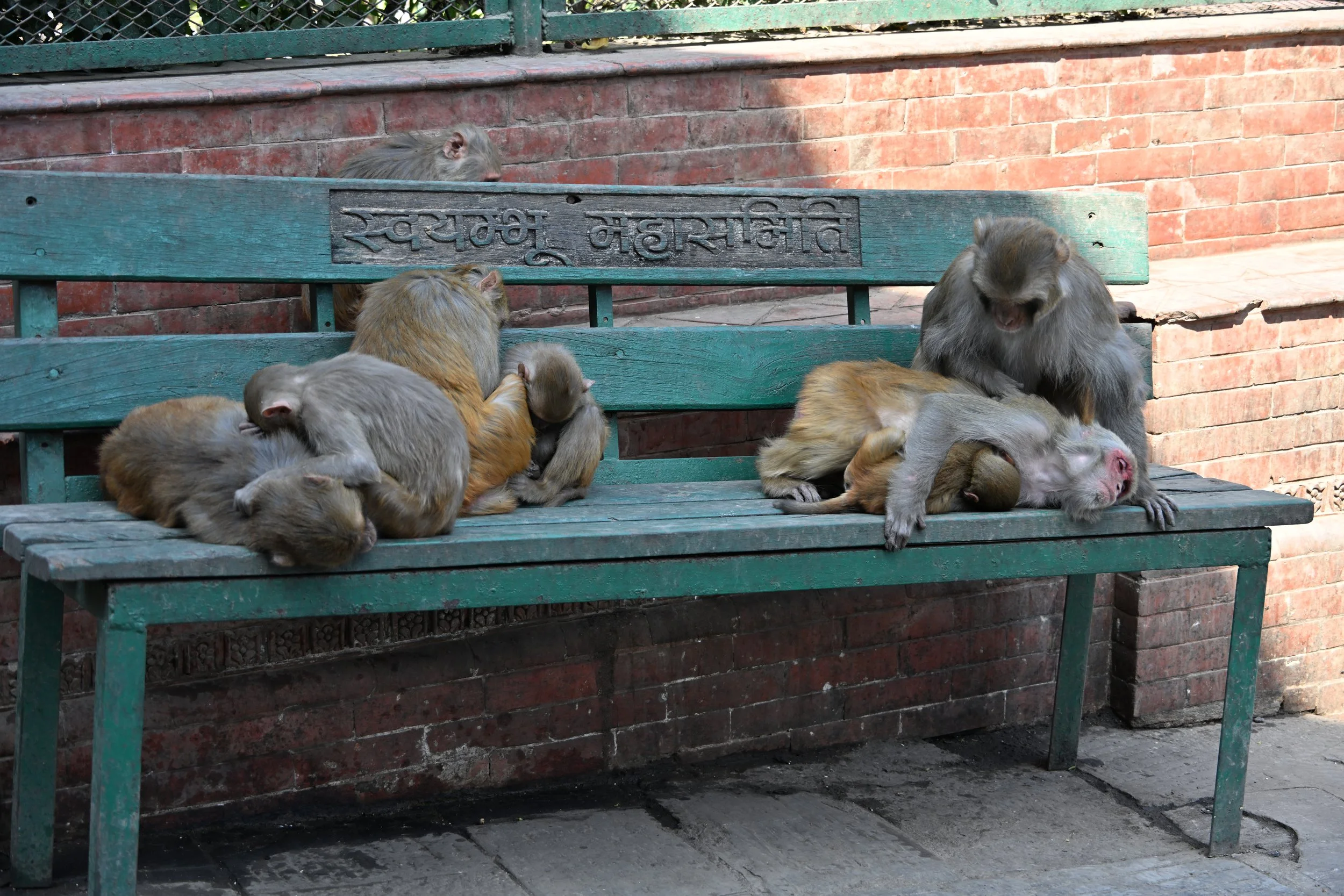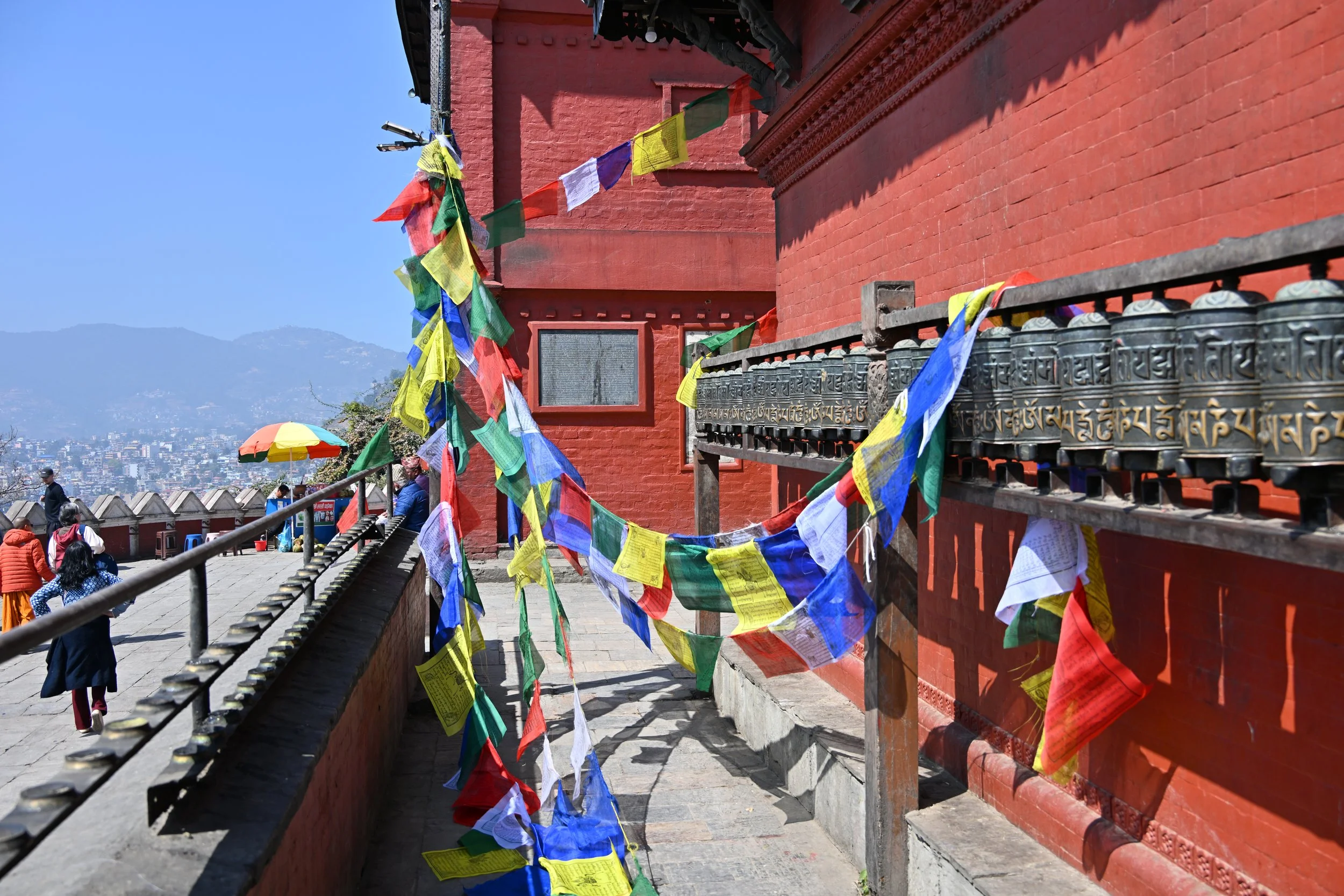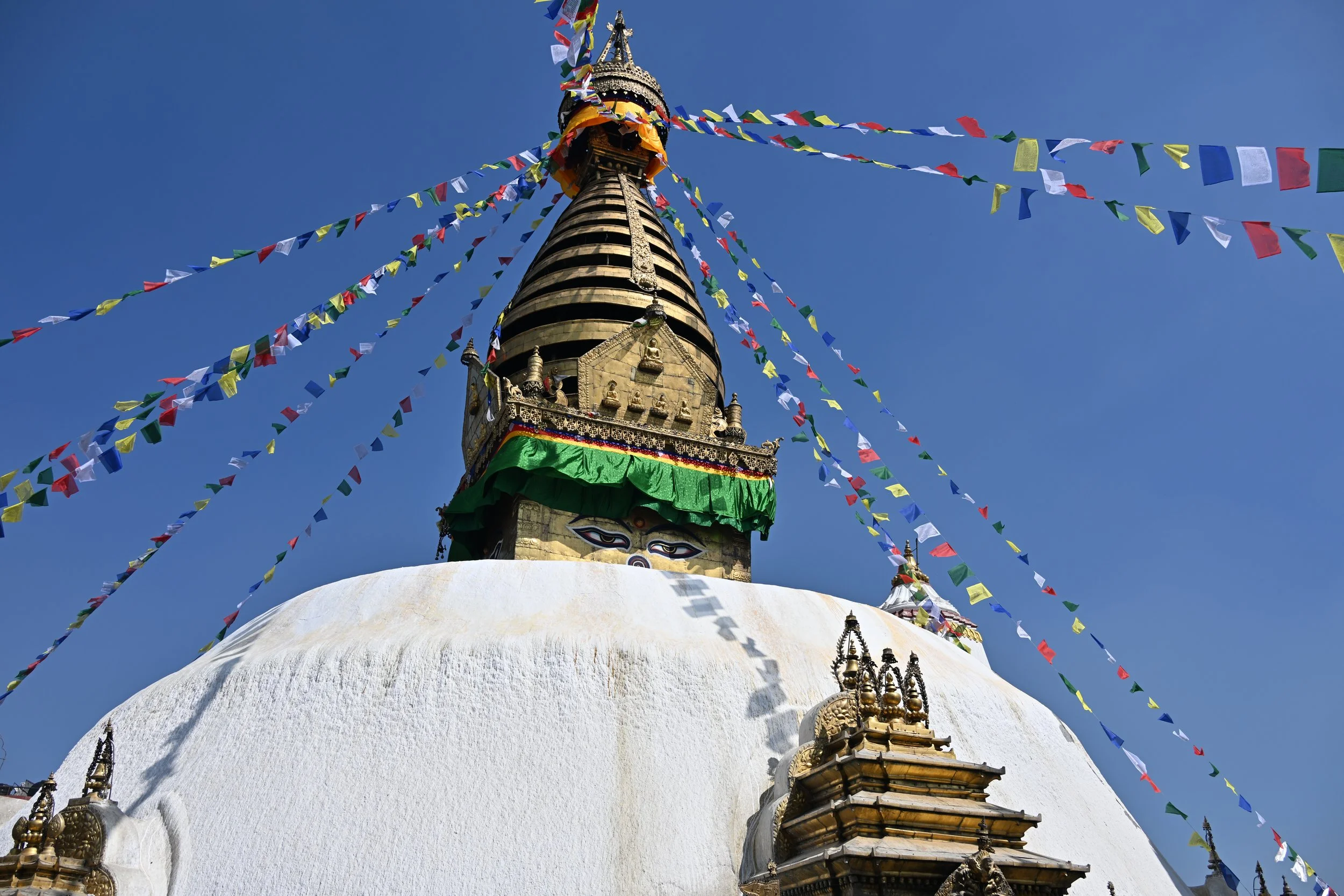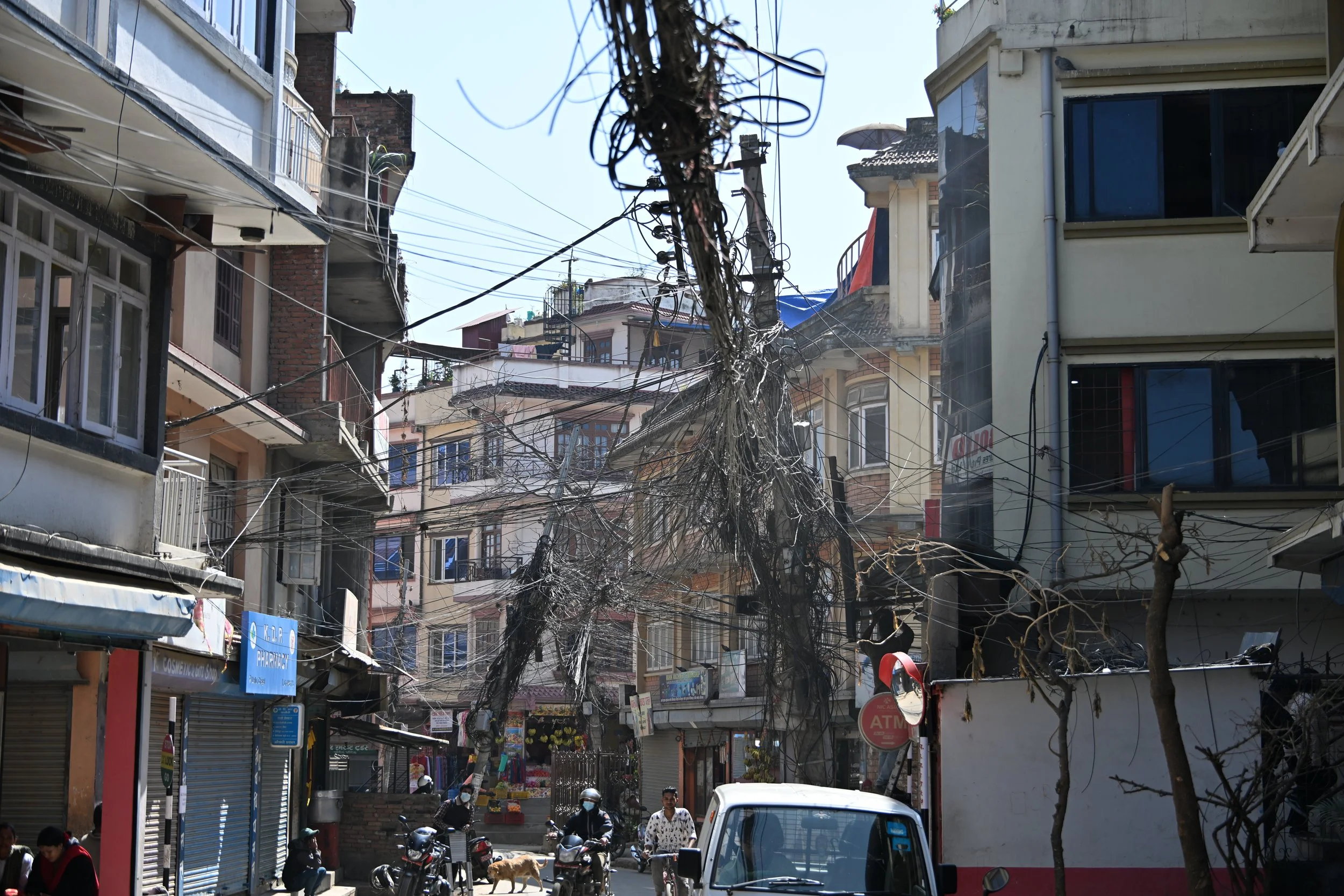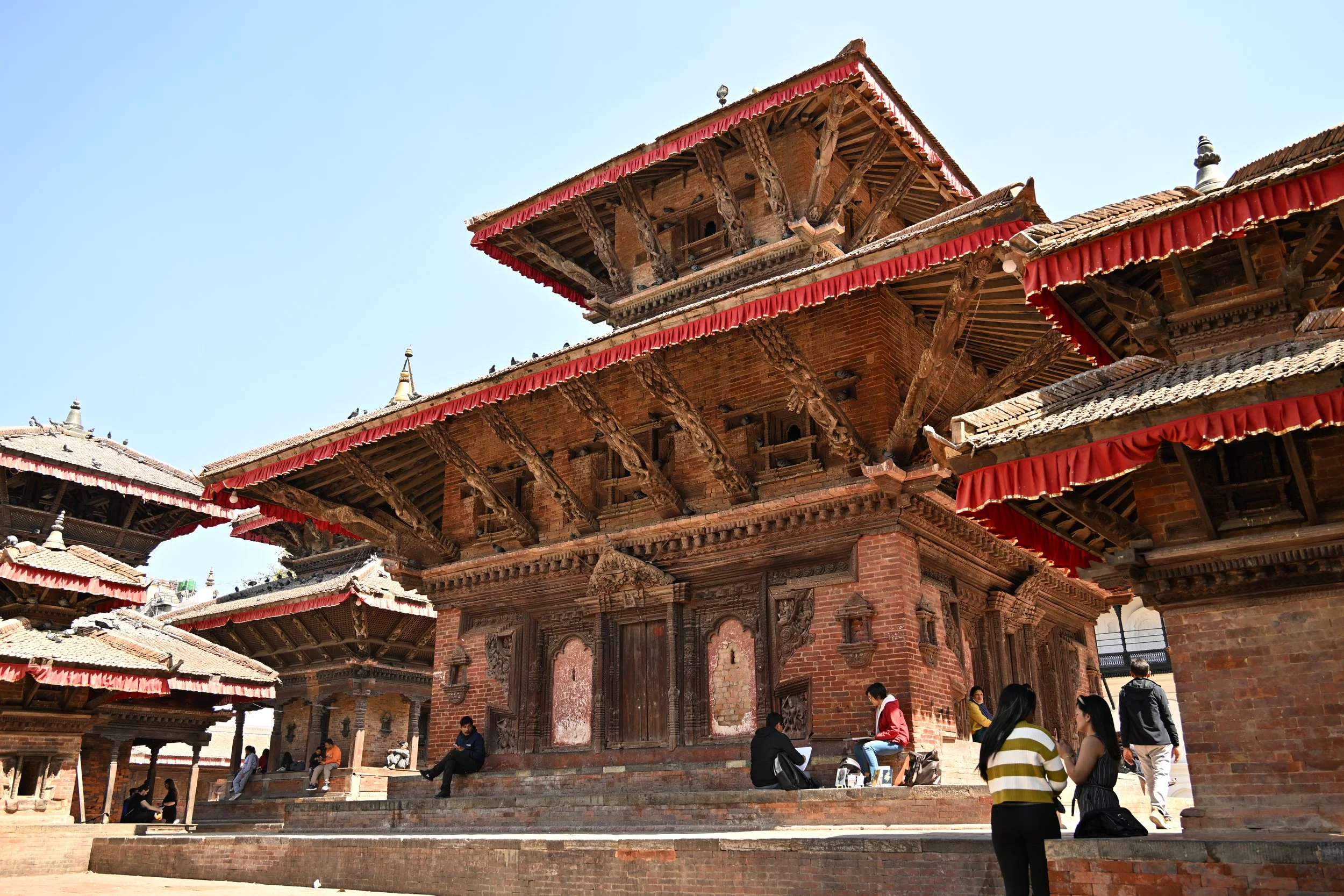Bhaktapur, Nepal & Trip Musings
So our last day in Nepal was spent in a town just outside of Kathmandu with a really neat “old town”. As I just found out from online research, Bhaktapur has been settled since around 1000 AD.
It is known for its woodcarving…
… and temples -
This Nyatapola Temple is one of only two five-story temples in the the Kathmandu Valley, and is the tallest building in Bhaktapur, as well as the tallest temple in Nepal, at 108 ft. It was built in 1702, and has withstood 4 major earthquakes.
Many temples and buildings in the various squares were unfortunately destroyed or damaged in both 1833 and 1934 by earthquakes…
… and you can see both old and restored buildings side-by-side throughout the city -
There was also a major earthquake in 2015, and reconstruction continues…
I happened upon this neat shop during our wanderings -
This Peacock Window dates from the early 15th century, and I found it by perusing Google Maps for places to see as we explored -
Speaking of earthquake damage, I’m not sure I’d visit this second story -
Some beautiful stone and bronze work -
Here was something that made us laugh. This couple had their wedding photo engagement crashed by some Asian tourists! (so of course I had to grab a photo too)
An interesting tidbit about Nepal — nearly all buildings, and even rooms in hotels and tea houses, are secured with a sliding bolt and padlock, from the very simple…
… to quite ornate -
Odds and Ends from the Trip
With the extreme differences in altitude and geography during this trip, at times we forgot that we had started off by diving! That made some folks a little bit crabby:
Midway through Bhutan, we visited the country’s tallest statue of Buddha, which is over 50 meters/170 feet tall, and watches over the capital of Thimphu:
Our flights on this trip were uneventful despite traveling in the Himalayas—albeit with one exception. Our Bhutan domestic flight from Bumthang to Paro (as part of our return to Kathmandu for the trek) was cancelled due to wind concerns. Thus, we unexpectedly received the opportunity to travel 300 kilometers by car that day—which was around 50% of the width of the country. Between that and our other automotive travels, we are comfortable in agreeing with our guide that the country does not have a single traffic light! Overall, Bhutanese roads were in good condition, and I don’t know that we heard more than a handful of horns over the 17 days we were there. (Nepal, on the other hand….)
Another interesting thing, which apparently is consistent with Indian practice as well, is that the people in both Bhutan and Nepal commonly eat without utensils—even when dinner consists of rice heavy meals with sauces. At first, this struck us as a bit strange, but we quickly became used to it.
Lisa previously provided many beautiful pictures of towering mountains from our trek. Just how high were they? During the trek, we saw ten separate mountains that were at least 6500 meters (21,325 feet) tall--more than 1000 feet higher than Mount McKinley (Denali)!
The trek also made us realize how lucky we all are to live in wealthy countries. As you could see by the previous pictures of porters carrying such things as construction supplies and water tanks up the mountain (and, in one unphotographed case, a queen size mattress!), mechanical assistance is at a premium in Nepal. Even our guide, however, was surprised at one instance of human ingenuity overcoming the lack of a donkey or ox:
Two things that surprised me about this trip were: 1)Both Nepal and Bhutan have rhinos and elephants in their low-altitude southern regions (I’ve always just thought of them as being the home of towering mountains); and 2) Both countries, despite their snow-capped peaks are basically in the same latitude as Florida—with most of our travels ranging between the latitudes of Orlando and Tampa.
Finally, in a 2022 post, we remarked that because of the impact of tectonic forces under the Andes, the patron saint of Colombia should be “Our Lady of Perpetual Construction.” To which Nepal says “Let me introduce you to Lord Vishwakarma, our god of engineering and construction.” Between the forces uplifting the Himalayas and the annual monsoons that attack the most recent improvements, the roads all seem to be under repair and construction—and progress is slow. Our 190 Km (118 Mile) trip from Chitwan National Park to Bhaktapur on the main highway took 6 hours… And when you got off the main highway in the mountains, things became interesting:
Luckily, the jeep driver in that video was a local who knew the road and his vehicle well. Over the course of a 2 hour drive, we were comfortable even as he took phone calls, and drove with one hand in our seatbelt-less vehicle! Perhaps someone was looking over us that day:
In any event, that is it for this trip, and we will be back with something completely different in the not too distant future.
